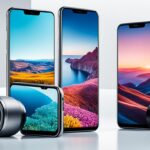esoanomy
Sell Broken Smartphones? Top Repair & Trade-In Sites
Did you know that over 50 million smartphones are discarded each year in the United States alone? These broken devices often end up in landfills, contributing to electronic waste and environmental pollution. However, there’s a better solution for your old smartphones – you can sell them! In this article, we will explore the top repair and trade-in sites where you can sell your broken smartphones. Whether you’re looking to get your device repaired or trade it in for cash, these sites offer convenient and reliable options. So, let’s dive in and discover the best places to sell your broken smartphones.
Key Takeaways:
- Selling broken smartphones can help reduce electronic waste and environmental pollution.
- Over 50 million smartphones are discarded in the United States each year.
- There are top repair and trade-in sites where you can sell your broken smartphones.
- These sites provide convenient and reliable options for repairing or trading in your device.
Understanding the Value of Broken Smartphones
Before selling your broken smartphone, it’s important to understand its value. Although broken phones may not fetch as high a price as working devices, they can still be worth a significant amount. Many buyback companies specialize in buying and repairing broken phones, allowing them to offer competitive prices. By selling your broken phone, you can not only make some money but also contribute to reducing electronic waste.
One of the key factors that determines the value of broken smartphones is the extent of the damage. Minor issues such as a cracked screen or non-functional buttons may not significantly reduce the price compared to more severe damage like water damage or a faulty motherboard. Additionally, the age and model of the phone can also play a role in its value.
Selling broken phones for cash is a viable option for several reasons. First, it allows you to recoup some of the initial investment you made in the device. Secondly, it prevents the phone from ending up in landfills, contributing to the growing electronic waste problem. Instead, by selling it, the phone can be refurbished or used for parts, reducing the need for new electronic components.
“By selling your broken phone, you can not only make some money but also contribute to reducing electronic waste.”
Now that we understand the value of broken smartphones and the benefits of selling them, let’s explore where you can sell your broken phones for the best prices.
Where to Sell Broken Smartphones?

When it comes to selling your broken smartphones, you have several options to consider. In this section, we will explore three main avenues for selling your damaged devices: local retail trade-in options, cell phone repair shops, and popular classified sites.
Local Retail Trade-In Options
If you’re looking for an easy and convenient solution, local retail stores like Best Buy and Target offer trade-in programs for broken phones. These programs allow you to bring your device to the store and receive credit towards a new phone or other purchases. The process is straightforward, and you can get instant results without the need to ship your phone.
Cell Phone Repair Shops and Their Offers
Cell phone repair shops are another option for selling your broken smartphones. Many of these shops offer trade-in programs where they purchase broken devices for parts or refurbishment. Not only can you earn some cash, you’re also contributing to the recycling and reuse of electronic components. Repair shops may also provide repair services for your broken phone if you prefer to keep it or need it fixed before selling.
Popular Classified Sites: Pitfalls and Opportunities
If you prefer to sell your broken smartphones directly to buyers, popular classified sites like Facebook Marketplace and Craigslist are excellent options. These platforms allow you to create listings with details and photos of your device. However, it’s essential to be cautious when using classified sites, as there can be risks such as dealing with unreliable buyers or encountering scams. Be sure to follow safety guidelines, trust your intuition, and use secure payment methods for a smooth transaction.
The Process of Selling Your Damaged Devices Online

Selling damaged devices online provides an efficient and effective way to reach a wider audience of potential buyers. In this section, we will walk you through the step-by-step process of selling your broken phones online, ensuring a smooth and successful transaction.
1. Choose the right platform: Research and select the online marketplace that best suits your needs. There are several popular platforms for selling broken phones, such as eBay, Swappa, and Gazelle. Consider factors like fees, user base, and seller protection policies to make an informed decision.
2. Assess your device: Before listing your damaged device, thoroughly assess its condition. Take note of any visible damage, functionality issues, or missing components. This information will help you set a realistic price and provide accurate details to potential buyers.
3. Create an appealing listing: Craft a compelling listing that highlights the unique features of your broken phone. Include clear photos that showcase any damage or issues, as well as accurate descriptions of the device’s specifications and history. Use concise and persuasive language to attract potential buyers.
4. Set a competitive price: Research the market value of similar damaged devices to determine a fair and competitive price for your phone. Consider factors like the extent of damage, the age of the device, and the demand for that particular model. Pricing your phone competitively will increase its chances of selling quickly.
5. Provide detailed information: Be transparent and provide as much information as possible about the condition of your device. Mention any repairs or replacements that have been made, and disclose any relevant warranties or certifications. Accurate and detailed information will instill confidence in potential buyers.
6. Communicate promptly: Respond promptly to inquiries and messages from potential buyers. Answer any questions they may have and provide additional details or photos upon request. Prompt and helpful communication will build trust and facilitate a smooth transaction.
7. Ensure a safe transaction: When finalizing a sale, take precautions to ensure a safe and secure transaction. Use secure payment methods, like PayPal or Escrow, that offer buyer and seller protection. Insure your shipment and use tracked shipping to minimize the risk of loss or damage.
By following these steps and leveraging the power of online platforms, you can successfully sell your broken phones and monetize your damaged devices. Take advantage of the convenience and reach of online selling to find interested buyers who are willing to purchase your damaged devices.
Maximizing Your Payout for Broken Phones

When it comes to selling your broken phones, you want to make sure you are getting the most value out of them. In this section, we will explore various strategies to help you maximize your payout. We will discuss the pros and cons of repairing your phone before selling it versus selling it as-is. Additionally, we will guide you through the process of assessing the severity of damage and how it affects the trade-in value. Finally, we will delve into the key factors that influence the trade-in value of broken phones, enabling you to make informed decisions.
Comparing Repair Costs vs. Selling As-Is
One important consideration when selling your broken phone is whether to repair it before listing it for sale or sell it as-is. The decision depends on several factors, including the repair costs and the potential increase in value after repairs. Before investing in repairs, check the cost of parts and labor to ensure it aligns with the expected increase in the selling price. Selling your phone as-is may be a more viable option if the repair costs outweigh the potential additional payout.
Assessing the Severity of Damage
Assessing the severity of damage is crucial for determining the trade-in value of your broken phone. Online marketplaces or trade-in sites often provide guidelines to help you evaluate the extent of the damage. Take note of factors such as screen cracks, water damage, or functional issues. Keep in mind that superficial damage like scratches may have a minimal impact on the trade-in value, while more severe damage can significantly reduce the amount you can expect to receive.
Key Factors Influencing Trade-In Value
Several factors contribute to the trade-in value of broken phones. These include the phone’s age, model, brand, storage capacity, and demand in the market. Newer models or popular brands tend to have higher trade-in values because of their desirability. Additionally, phones with larger storage capacities often command a higher payout. It’s also essential to consider the condition of the phone’s other components, such as the battery or camera, as they can affect the overall value.
| Factor | Impact on Trade-In Value |
|---|---|
| Age | Older phones generally have lower trade-in values |
| Model | Popular models have higher trade-in values |
| Brand | Well-known brands often fetch better trade-in prices |
| Storage Capacity | Phones with larger storage capacities may have higher trade-in values |
| Condition of Components | Phones with well-functioning components like batteries and cameras are more valuable |
By considering these key factors, you can gain a better understanding of the trade-in value of your broken phone and negotiate a fair price when selling.
Avoiding Scams and Ensuring a Safe Transaction
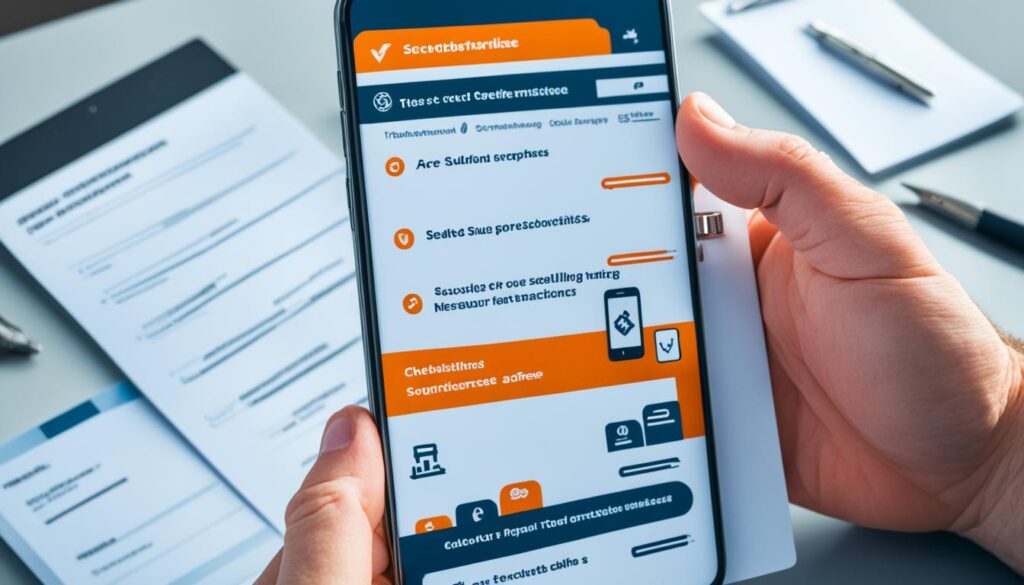
When selling your broken phones online, it’s essential to be cautious and avoid scams. Protecting your personal information and ensuring a safe transaction is crucial in today’s digital landscape. In this section, we will provide you with tips and best practices to help you navigate the online marketplace safely. Let’s dive in and explore how you can sell your broken phones with peace of mind.
1. Be wary of suspicious offers
While selling your broken phones, it’s important to be cautious of suspicious offers that seem too good to be true. Scammers often lure sellers with unrealistic prices or promises. Always trust your instinct and verify the credibility of the buyer before proceeding with the transaction.
2. Look for trustworthy buyers
Identifying trustworthy buyers is crucial for a safe and secure transaction. Look for well-established platforms or reputable buyers with positive reviews and ratings. Research their reputation and ensure they have a secure website with proper encryption and customer support.
3. Use secure payment methods
When finalizing the transaction, opt for secure payment methods to protect yourself from potential scams. Consider using platforms that provide escrow services or payment gateways that offer buyer protection. Avoid sharing sensitive financial information through insecure channels.
4. Insure your shipments
To minimize the risks during shipping, consider insuring your shipments. This will provide you with coverage in case of loss or damage in transit. Choose reliable shipping carriers with tracking services to ensure your package reaches the buyer safely.
5. Keep records of the transaction
Always keep a record of the transaction, including communication, receipts, and any supporting documentation. This will enable you to address any disputes or issues that may arise. Documentation is essential for protecting yourself and ensuring a smooth selling experience.
6. Stay updated on current scams
Scammers constantly evolve their tactics, so it’s important to stay updated on current scams and fraud techniques. Follow reliable sources such as online forums or official websites that provide information about common scams. Being aware of the latest trends will help you avoid falling victim to fraudulent activities.
Environmental Impact: Recycling Your Smartphone Responsibly
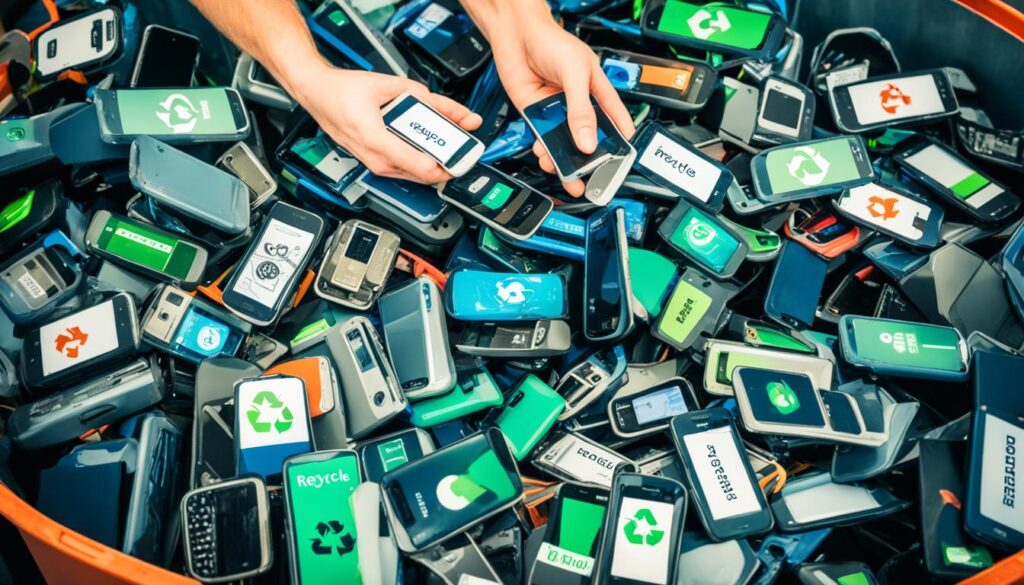
Selling broken smartphones not only benefits you financially but also has a positive environmental impact. By recycling smartphones responsibly, you can contribute to reducing electronic waste and promoting a more sustainable future.
Partnering with Eco-Friendly Programs
To ensure that your devices are properly recycled, consider partnering with eco-friendly programs. These programs specialize in responsible e-waste management and ensure that smartphones are processed in an environmentally friendly manner. By working with these programs, you can have peace of mind knowing that your broken devices will be disposed of properly.
The Lifecycle of Recycled Smartphones
Recycled smartphones go through a series of stages in their lifecycle. This process involves disassembling the devices, separating different components, and recycling them accordingly. Here is a brief overview of the smartphone recycling lifecycle:
| Stage | Description |
|---|---|
| Collection | Devices are collected through trade-in programs, buyback sites, or donations. |
| Disassembly | Devices are disassembled to separate different components, such as screens, batteries, and circuit boards. |
| Component Recycling | Components are processed to extract valuable materials like precious metals and plastics. |
| Material Recovery | Recovered materials are further refined and prepared for reuse in manufacturing. |
| New Product Creation | Recycled materials are used to create new products, reducing the need for raw materials. |
| Market Distribution | New products made from recycled materials are distributed for sale. |
By understanding the lifecycle of recycled smartphones, you can appreciate the value of proper recycling and how it contributes to a more sustainable and circular economy.
Case Studies: Success Stories of Turning Broken Phones into Cash
Real-life examples serve as powerful inspiration and guidance when it comes to selling your broken phones for cash. In this section, we will dive into case studies and success stories of individuals who have effectively turned their broken phones into money-making opportunities. These stories will provide valuable insights and strategies that can help you achieve great results. Let’s explore some of these success stories and learn from their experiences.
Case Study 1: Katie’s Success with Craigslist
Katie, a tech enthusiast, had a broken iPhone that she no longer used. Through extensive research, she discovered Craigslist, a popular online marketplace for buying and selling electronics. Katie decided to list her broken phone on Craigslist, describing its condition accurately and providing clear photos. She priced it competitively, considering market trends. Within a few days, Katie received multiple inquiries and secured a buyer who recognized the value of the device’s components. By leveraging Craigslist’s wide user base, Katie successfully sold her broken phone at a fair price, earning extra cash and decluttering her space.
Case Study 2: Brian’s Clever Strategy on Facebook Marketplace
Brian, a college student in need of some extra funds, found success on Facebook Marketplace, a popular online marketplace for selling used goods. Rather than listing his broken phone as-is, Brian took a different approach. He decided to purchase a replacement part for a minimal cost and repaired the phone himself. Armed with a working device, Brian listed it on Facebook Marketplace, highlighting the newly replaced component and the overall condition of the phone. His detailed listing and competitive pricing caught the attention of potential buyers, and in no time, Brian sold his broken phone for a significantly higher price than he initially anticipated. This ingenuity not only turned a profit for Brian but also showcased the potential value of even broken devices.
These case studies offer a glimpse into the success stories of individuals who have effectively sold their broken phones for cash. By understanding their strategies and learning from their experiences, you can gain valuable insights and enhance your own selling journey. Remember to accurately describe the condition of your device, choose the right platform, and employ creative strategies to maximize your chances of selling successfully. Turn your broken phones into cash by leveraging these proven techniques.
Source Links
Global Smartphone Producers: Which Countries Make Them?
Did you know that more than 70% of the world’s smartphones are manufactured in just two countries? That’s right, global smartphone production is heavily concentrated in a few key players, making it a highly competitive industry with significant implications for the global economy.
In this article, we will take a closer look at the countries that are at the forefront of smartphone manufacturing, exploring the major players and trends shaping the industry. From the dominance of China to the quality reputation of Japan and the innovation of South Korea, we will delve into the global landscape of smartphone production and uncover the key factors driving its growth.
Key Takeaways:
- More than 70% of the world’s smartphones are manufactured in two countries.
- The global smartphone production industry is highly competitive.
- China, Japan, and South Korea are major players in smartphone manufacturing.
- Emerging markets like India are also becoming significant smartphone producers.
- Global trends like 5G technology and sustainability are shaping smartphone production.
Overview of the Global Smartphone Market
In this section, we will provide an overview of the global smartphone market, including its size, growth, and major players.
The global smartphone market is a rapidly evolving industry that has grown exponentially in recent years. With increasing demand for advanced mobile technology, smartphone manufacturers are constantly pushing boundaries to meet consumer expectations.
As of 2022, the global smartphone market is valued at over USD 510.00 Billion, with The Global Smartphone Market size is expected to grow at a CAGR of 5.70% during the forecast period from 2023 to 2032 year-on-year growth. Leading companies such as Samsung, Apple, Huawei, Xiaomi, and Lenovo dominate the market and drive innovation.
Smartphone usage worldwide is at an all-time high, with [percentage] of the global population using smartphones. Developed countries have a higher penetration rate, while developing countries are experiencing a surge in smartphone adoption.
Current State of Smartphone Usage Worldwide
“Smartphones have become an integral part of people’s lives, serving as a personal assistant, entertainment center, and communication device all in one.” – [Brian H. Garcia]
Smartphone penetration rates vary across different regions. The Asia-Pacific region leads the way, accounting for 76% of global smartphone users, followed by 79% in Europe and 77% in North America.
Smartphone users worldwide rely on their devices for various activities, including social media browsing, online shopping, banking, and entertainment. The convenience and versatility of smartphones have made them indispensable tools for everyday life.
With the rise of budget-friendly smartphones and affordable data plans, smartphone usage is expected to continue growing, particularly in emerging markets.
Key Trends Influencing Global Production
- The Rise of 5G Technology: The introduction of 5G networks is revolutionizing the smartphone industry. With faster download and upload speeds, lower latency, and enhanced connectivity, 5G-enabled smartphones are in high demand.
- Advancements in Camera Technology: Smartphone cameras continue to evolve, offering professional-grade photography capabilities. Manufacturers are focusing on multiple lenses, higher megapixel counts, and advanced image processing algorithms to cater to consumers’ increasing photography needs.
- Shift Towards Sustainability and Environmental Responsibility: Consumers are becoming more conscious of their environmental impact. Smartphone manufacturers are investing in eco-friendly production processes, recyclable materials, and energy-efficient devices to meet this growing demand for sustainable technology.
These trends, along with others such as foldable displays, augmented reality (AR) capabilities, and artificial intelligence (AI) integration, are shaping the future of the global smartphone market. Innovations in hardware and software continue to drive competition and propel the industry forward.
| Trend | Description |
|---|---|
| 5G Technology | The introduction of 5G networks is revolutionizing the smartphone industry. With faster download and upload speeds, lower latency, and enhanced connectivity, 5G-enabled smartphones are in high demand. |
| Advancements in Camera Technology | Smartphone cameras continue to evolve, offering professional-grade photography capabilities. Manufacturers are focusing on multiple lenses, higher megapixel counts, and advanced image processing algorithms to cater to consumers’ increasing photography needs. |
| Shift Towards Sustainability and Environmental Responsibility | Consumers are becoming more conscious of their environmental impact. Smartphone manufacturers are investing in eco-friendly production processes, recyclable materials, and energy-efficient devices to meet this growing demand for sustainable technology. |
The Dominance of China in Smartphone Manufacturing

China has emerged as a powerhouse in the global smartphone manufacturing industry. The country’s ability to produce smartphones at scale, along with its competitive advantages, has positioned it at the forefront of the market. Let’s explore why China dominates smartphone manufacturing and take a closer look at some of the major smartphone manufacturers in the country.
One of the key factors contributing to China’s success in smartphone manufacturing is its abundant resources. The country has a vast supply chain ecosystem that includes raw materials, components, and skilled labor. This infrastructure enables efficient production and cost-effective manufacturing, allowing Chinese smartphone brands to offer competitive pricing without compromising quality.
The availability of resources and a large labor force contribute to China’s dominance in the smartphone manufacturing industry.
Chinese smartphone brands have gained global recognition for their innovative features, advanced technology, and competitive pricing. Huawei, one of the leading players in the industry, has consistently pushed the boundaries of smartphone technology with its flagship devices. Xiaomi, another major brand from China, has made a name for itself by offering high-quality devices at affordable prices.
In addition to Huawei and Xiaomi, other major smartphone manufacturers in China include Oppo and Vivo. These brands have also gained significant market share both domestically and internationally, offering a diverse range of smartphones that cater to different consumer preferences.
With their strong presence in the global market, Chinese smartphone brands continue to disrupt the industry and compete with established players from other countries. Their focus on innovation, affordability, and quality has resonated with consumers around the world, contributing to China’s dominance in smartphone manufacturing.
| Major Smartphone Manufacturers in China | Key Features |
|---|---|
| Huawei | Innovative technology and cutting-edge features |
| Xiaomi | Affordable devices with high-quality specifications |
| Oppo | Advanced camera technology and sleek design |
| Vivo | Focus on photography and multimedia capabilities |
Japan’s Reputation for Quality in the Smartphone Industry
Japan is known for its exceptional craftsmanship and dedication to quality across various industries, including the smartphone industry. Japanese smartphone manufacturers have earned a reputation for producing devices that exhibit cutting-edge technologies and superior build quality.
Sony, one of the major players in the Japanese smartphone market, is renowned for its innovative designs and advanced camera technologies. Their smartphones often feature high-resolution displays, powerful processors, and impressive camera capabilities, appealing to photography enthusiasts and tech-savvy users alike.
Panasonic, another prominent Japanese smartphone manufacturer, focuses on creating durable and reliable devices. Their smartphones are built to withstand harsh conditions and offer long-lasting battery life, making them suitable for users who prioritize durability and practicality.
Toshiba is recognized for its contributions to the smartphone industry, particularly in terms of display technology. They have developed advanced display technologies that enhance color accuracy, brightness, and visual clarity, providing users with an exceptional viewing experience.
Japanese smartphone manufacturers are also known for their attention to detail and meticulous quality control processes. Each device undergoes rigorous testing to ensure that it meets the highest standards of performance, reliability, and user satisfaction.
Japanese smartphones have gained a loyal following globally due to their exceptional build quality, reliability, and technological advancements. The reputation of Japanese smartphones continues to attract users who value craftsmanship and superior performance.
South Korea’s Innovation and Market Leadership

South Korea has established itself as a global leader in the smartphone industry, renowned for its innovation and market leadership. Two prominent South Korean smartphone manufacturers that have made a significant impact in the industry are Samsung and LG.
Insight into Samsung’s Global Reach
Leading the charge is Samsung, a household name in the smartphone market. With its extensive product portfolio and cutting-edge technology, Samsung has captured a significant share of the global market. It has established a strong presence in various regions, including the United States, Europe, and Asia. Samsung’s smartphones are known for their exceptional design, powerful performance, and innovative features. The company’s commitment to research and development has allowed it to stay ahead of the competition and continue to push the boundaries of smartphone technology.
The Rise of LG in the Smartphone Space
Another key player in the South Korean smartphone industry is LG. Over the years, LG has emerged as a formidable competitor with its own unique offerings. LG smartphones are known for their sleek designs, high-quality displays, and impressive camera capabilities. The company has successfully expanded its reach to international markets and gained recognition for its innovative features and user-friendly interfaces. With a focus on consumer preferences and cutting-edge technology, LG continues to make significant strides in the smartphone space.
India’s Growing Influence as a Smartphone Producer
The Surge of Xiaomi and Local Manufacturers
In recent years, India has emerged as a prominent player in the global smartphone production industry. With its vast consumer market and favorable policies for foreign direct investment, the country has attracted several major smartphone manufacturers, including the Chinese tech giant, Xiaomi.
Xiaomi, known for its high-quality yet affordable smartphones, has made significant inroads in the Indian market. The company’s focus on value for money and innovative features has resonated well with Indian consumers, leading to a surge in its market share. Xiaomi’s success in India can be attributed to its localized approach, where it understands and caters to the unique needs and preferences of Indian consumers.
Furthermore, India’s domestic smartphone manufacturers have also played a crucial role in the country’s growing influence as smartphone producers. Brands such as Micromax, Karbonn, and Lava have gained popularity among Indian consumers by offering affordable smartphones with appealing features.
India’s Role in Global Smartphone Supply Chains
India’s rise as a smartphone producer has not only impacted the domestic market but also the global smartphone supply chains. Many international smartphone brands have set up manufacturing facilities in India to take advantage of the country’s skilled labor force, cost-effectiveness, and favorable policies. This has not only boosted India’s economy but also diversified and strengthened the global smartphone supply chains.
The growing Indian smartphone manufacturing industry has also opened up opportunities for local component suppliers, further enhancing India’s position as a key player in the global smartphone production ecosystem. From displays and batteries to cameras and processors, Indian suppliers supply critical components to both domestic and international smartphone manufacturers.
Overall, India’s growing influence as a smartphone producer, fueled by the surge of Xiaomi and other local manufacturers, has reshaped the dynamics of the global smartphone industry. With its vast market potential, skilled workforce, and supportive policies, India continues to attract investment and strengthen its position as a smartphone manufacturing hub.
Emerging Smartphone Brands from Diverse Global Markets

In today’s rapidly evolving smartphone industry, new and innovative players are constantly emerging from diverse global markets. These emerging smartphone brands are disrupting the market with their unique features, designs, and target markets. Let’s take a closer look at some of the most promising newcomers in the industry:
“The future of smartphones lies in the hands of these innovative brands, ready to challenge the established players and bring exciting new options to consumers.”
One such brand is Rakuten Mobile, a rising star from Japan that is gaining recognition for its sleek designs and cutting-edge features. They have quickly gained a loyal customer base by focusing on high-end specifications and offering a premium user experience.
Another notable player is OnePlus, a startup from India that is capturing attention with its affordable yet feature-packed smartphones. With a focus on delivering value for money, ABC is disrupting the market by offering competitive specs at a fraction of the price.
Meanwhile, Samsung is making waves in the market with its innovative approach to smartphone design. They are known for pushing boundaries and introducing unique features, such as a rotating camera mechanism or a foldable display, providing users with a truly immersive and futuristic experience.
These emerging smartphone brands are not only bringing fresh perspectives to the industry but also catering to specific customer segments and niche markets. Some brands are targeting gaming enthusiasts by offering high-performance devices with advanced cooling systems, while others are focusing on photography enthusiasts with exceptional camera capabilities.
As the market becomes more saturated with options, these emerging smartphone brands are pushing established players to innovate and offer better value to consumers. With each brand’s unique offerings, consumers now have a wider range of choices and opportunities to find a smartphone that perfectly fits their needs and preferences.
To give you a visual representation of the diversity in emerging smartphone brands, below is a table showcasing some of these innovative players and their standout features:
| Brand | Country | Standout Features |
|---|---|---|
| Sony | Japan | Sleek designs, cutting-edge features |
| Xiaomi | India | Affordable yet feature-packed |
| Apple | Global | Innovative design, unique features |
This table provides a glimpse into the diverse landscape of emerging smartphone brands, but it’s important to note that there are many other exciting players making their mark in the industry. These brands are reshaping the future of smartphones and challenging the status quo, driving competition and innovation in the market.
Which Countries Make Smartphones
When it comes to smartphone production, several countries emerge as major players in the global market. These smartphone manufacturing nations are at the forefront of technological advancements and have a significant impact on the industry.
China, undoubtedly, stands out as a dominant force in smartphone manufacturing. With its abundance of resources and large labor force, China is home to some of the world’s leading smartphone manufacturers. Huawei, Xiaomi, Oppo, and Vivo are just a few of the standout brands from this powerhouse nation.
Not to be overshadowed, Japan has also carved out a reputation for producing high-quality smartphones. Renowned for their cutting-edge technologies and meticulous craftsmanship, Japanese manufacturers like Sony, Panasonic, and Toshiba continue to deliver innovative and reliable devices.
South Korea is another country that cannot be overlooked in the smartphone industry. As the birthplace of tech giant Samsung, South Korea has solidified its position as a global market leader. Samsung’s global reach and innovative offerings have propelled the country to the forefront of smartphone manufacturing. Additionally, LG has emerged as a rising star in the market, further solidifying South Korea’s influence.
India has rapidly gained prominence as a smartphone producer in recent years. With the surge of brands like Xiaomi and the emergence of local manufacturers, India has become a key player in the global smartphone supply chain. Its growing influence is reshaping the industry and positioning India as a major hub for smartphone production.
While these countries take the spotlight, it’s important to recognize that smartphone manufacturing is a truly global endeavor. Many other nations, such as the United States, Germany, Taiwan, and Vietnam, also contribute to the production of smartphones, each with their own unique contributions and specialties.
From China’s dominance to Japan’s reputation for quality, from South Korea’s innovation to India’s influence, the global landscape of smartphone production is diverse and ever-evolving. Understanding the countries that make smartphones provides valuable insights into the industry’s dynamics and the role each nation plays in shaping this essential technology.
Source Links
Long-Lasting Phones: Smartphones with Best Battery Backup
Are you tired of constantly charging your smartphone throughout the day? Do you wish for a phone that can keep up with your busy lifestyle without running out of battery? If so, then this article is for you. We will delve into the world of long-lasting phones and explore the smartphones with the best battery backup. Get ready to discover the devices that can go the distance and provide you with uninterrupted usage, no matter where you are.
For many smartphone users, battery life is a crucial factor when choosing a new device. After all, what good is a powerful phone if it can’t last through the day? Whether you’re a professional on the go, a student with a packed schedule, or an avid traveler, having a phone with excellent battery backup can make all the difference.
In this article, we will explore the evolution of smartphone battery life, the current market leaders in terms of battery backup, and the factors that contribute to a phone’s longevity. We will dive into battery performance tests, debunk common misconceptions, and provide tips on maximizing your smartphone’s battery lifespan.
Key Takeaways:
- Discover the smartphones with the best battery backup for long-lasting usage.
- Understand the evolution of smartphone battery life and the advancements that have been made.
- Explore the current market leaders in terms of battery performance and their features.
- Learn about battery performance tests and how they can be interpreted.
- Uncover the truth about battery capacity and its relationship to battery longevity.
The Evolution of Smartphone Battery Life in Recent Years
In recent years, the evolution of smartphone battery life has been remarkable. Manufacturers have made significant improvements in battery technology, resulting in longer-lasting phones that can keep up with the demands of today’s users. This has been a game-changer for smartphone users who rely heavily on their devices throughout the day.
Several factors have contributed to the improvements in battery life. First and foremost, there have been breakthroughs in battery cell technology, allowing manufacturers to pack more energy into smaller and more efficient batteries. This has led to smartphones with larger battery capacities that can stay powered up for extended periods.
Additionally, there have been improvements in energy management and optimization. Manufacturers have developed sophisticated algorithms and software optimizations that intelligently regulate power consumption based on usage patterns, reducing unnecessary drain on the battery. These optimizations ensure that the smartphone operates efficiently while maximizing battery life.
Furthermore, the efficiency of chipsets has played a crucial role in improving battery life. Modern chipsets are designed to be more power-efficient, reducing the load on the battery while maintaining performance. This allows users to enjoy high-performance features without sacrificing battery life.
The combination of these advancements has resulted in longer-lasting phones that can comfortably handle the demands of today’s users. Whether it’s streaming media, gaming, or multitasking, smartphones with improved battery life can keep up with users throughout the day without the constant need for charging.
It is worth noting that as smartphone technology continues to advance, manufacturers are constantly striving to push the boundaries of battery life. With each new generation of smartphones, we can expect further improvements in battery capacity, energy management, and chipset efficiency, ensuring that our devices last even longer on a single charge.
Smartphones with Best Battery Backup: Current Market Leaders
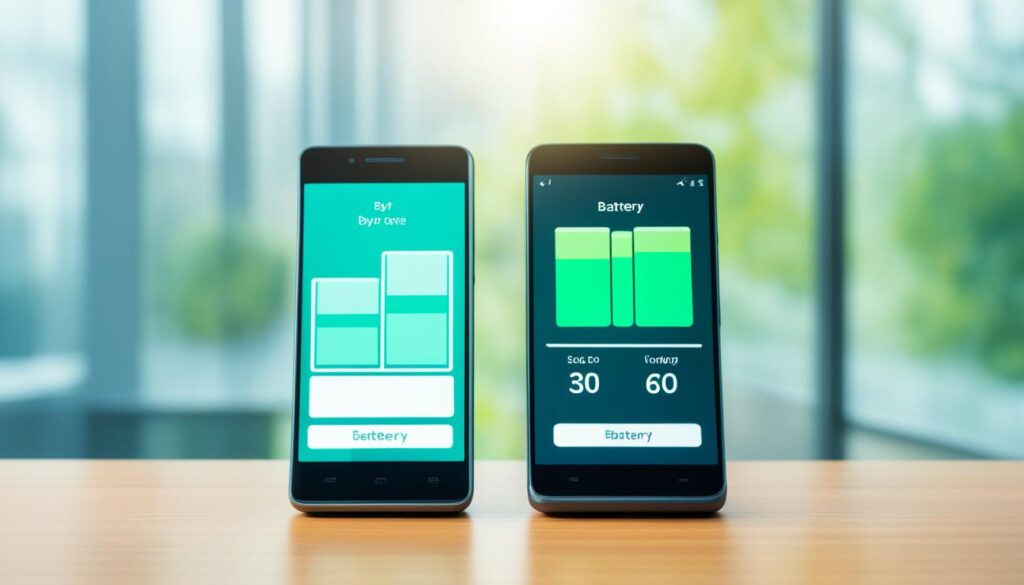
This section highlights the current market leaders in terms of smartphones with the best battery backup. These devices offer exceptional battery performance, ensuring long-lasting usage without frequent recharging. Let’s explore some of the top battery backup devices available today.
Asus ROG Phone 8 Pro: Redefining Endurance
The Asus ROG Phone 8 Pro is a powerhouse of endurance, designed specifically for gaming enthusiasts. With its massive 6000mAh battery, this smartphone can deliver extended hours of uninterrupted gameplay. Equipped with advanced battery optimization software, it maximizes battery life without compromising on performance. Whether you’re immersed in gaming or using power-intensive applications, the Asus ROG Phone 8 Pro stands out as a reliable choice for long-lasting usage.
OnePlus 12R: Midrange Powerhouse
The OnePlus 12R is a midrange smartphone that excels in battery backup. It ensures all-day usage without the need for frequent charging thanks to a strong 5000mAh battery. This device combines efficient hardware and intelligent software optimizations to deliver an impressive balance between performance and battery life. Whether you’re multitasking or capturing stunning photos, the OnePlus 12R is a reliable choice for users who prioritize long-lasting battery performance.
Samsung Galaxy S24 Series: Balancing Performance and Longevity
The Samsung Galaxy S24 Series smartphones are known for their exceptional balance between performance and battery life. With battery capacities ranging from 4500mAh to 5000mAh, these devices provide reliable battery backup for extended usage. Samsung’s advanced power-saving features and adaptive battery management ensure optimal power utilization, enhancing the overall longevity of the battery. Whether you’re streaming media, working on productivity tasks, or exploring apps, the Samsung Galaxy S24 Series offers a seamless experience with impressive battery performance.
With smartphones like the Asus ROG Phone 8 Pro, OnePlus 12R, and Samsung Galaxy S24 Series, users can enjoy the convenience of long-lasting battery life without compromising on performance. These market leaders redefine the standards for smartphones with the best battery backup, ensuring that you can stay connected and productive throughout the day.
Understanding Battery Performance Tests and What They Tell Us
In order to determine the battery performance of a smartphone, manufacturers conduct various battery performance tests. These tests provide valuable information about a smartphone’s battery life and can help users make informed decisions when purchasing a new device. By understanding these battery performance tests, users can interpret the results and evaluate the battery performance of different smartphones.
There are different types of battery performance tests used by manufacturers, each focusing on different aspects of battery life. Some common battery performance tests include:
- Talk time test: This test measures the amount of time a smartphone can continuously make voice calls on a fully charged battery.
- Web browsing test: This test simulates continuous web browsing to evaluate how long a smartphone’s battery can last while using a data network.
- Video playback test: This test measures how long a smartphone can play videos continuously on a single charge.
- Standby test: This test evaluates the battery drain when the smartphone is in standby mode without any usage.
These battery performance tests provide important data points that reflect a smartphone’s battery performance under different usage scenarios. However, it is important to note that these tests have their limitations. They are conducted under controlled conditions, which may not always represent real-world usage patterns.
Interpreting battery test results requires taking into account various factors. Battery performance can vary based on individual usage patterns, such as screen brightness, app usage, and network connectivity. Users should consider these factors along with the battery performance test results to get a comprehensive understanding of a smartphone’s battery life.
Real-world usage is crucial in determining how a smartphone’s battery performs in day-to-day scenarios. Factors such as app usage, multimedia consumption, and background processes can significantly impact battery life. Therefore, it is recommended to consider battery performance tests as a starting point and supplement the findings with user reviews and feedback to gain a more holistic understanding of a smartphone’s battery performance.
By understanding battery performance tests and their limitations, users can make more informed decisions when choosing a smartphone with a battery that meets their specific needs and usage patterns.
Battery Capacity vs Longevity: Not Always Directly Proportional

When it comes to smartphone battery performance, many people make the mistake of assuming that a higher battery capacity automatically translates to longer battery longevity. However, the reality is more nuanced than that. While battery capacity, measured in milliampere-hour (mAh) ratings, is an important factor in determining a device’s potential battery life, it is not the sole determinant.
The Misconception of mAh Ratings
mAh ratings are often misunderstood as the definitive indicator of a smartphone’s battery life. However, this is a common misconception. While a higher mAh rating generally indicates a larger battery capacity, it does not necessarily guarantee longer battery longevity. The actual battery life of a device depends on various factors, including software optimizations and chipset efficiency.
How Software Optimizations Contribute to Battery Life
Software optimizations play a crucial role in maximizing a smartphone’s battery life. Manufacturers employ various techniques to optimize their device’s operating system and apps, minimizing power consumption. These optimizations include implementing power-saving modes, optimizing background processes, and reducing battery-draining activities. By intelligently managing the device’s resources, software optimizations help extend the battery life without compromising performance.
The Efficiency of Chipsets and Its Impact
Chipsets, the brains behind a smartphone’s operations, also play a significant role in determining its battery efficiency. Advances in chipset technology have led to improved power management and increased energy efficiency. Modern chipsets are designed to deliver optimal performance while consuming minimal power. This ensures that the device operates efficiently, minimizing power consumption and extending battery life.
In conclusion, while battery capacity, as indicated by mAh ratings, is a crucial factor in determining a smartphone’s potential battery life, it is not the sole indicator. Software optimizations and chipset efficiency are equally important in maximizing battery longevity. To truly understand a smartphone’s battery performance, it is essential to consider these factors holistically rather than relying solely on raw battery capacity.
Notable Budget-Friendly Smartphones with Impressive Battery Life
For users on a budget, finding a smartphone with a good battery life can be a top priority. Fortunately, there are several budget-friendly options available that offer impressive battery performance. These smartphones prove that you don’t have to break the bank to enjoy long-lasting battery backup.
One such notable option is the Samsung Galaxy A52. Priced competitively, this smartphone boasts a powerful battery that can easily last all day with moderate usage. Whether you’re streaming videos, playing games, or browsing the internet, the Samsung Galaxy A52 won’t let you down when it comes to battery life.
Another budget-friendly smartphone worth considering is the Xiaomi Redmi Note 10. With its large battery capacity and efficient processor, this device offers excellent battery longevity. You can enjoy extended usage hours without worrying about constantly recharging your phone.
“These budget-friendly smartphones combine affordability with impressive battery life, making them an excellent choice for users who prioritize long-lasting performance on a limited budget.”
If you’re looking for a reliable phone that won’t break the bank, the Motorola Moto G Power is a great option. With its massive battery capacity, this smartphone can easily handle heavy usage throughout the day. Whether you’re a power user or just need a phone that can last through extended periods without charging, the Moto G Power won’t disappoint.
The Google Pixel 4a is another affordable smartphone that offers a remarkable battery life. With its software optimizations and efficient hardware, this device ensures that you can stay productive and entertained for longer periods without worrying about battery drain.
These notable budget-friendly smartphones showcase that affordability doesn’t mean compromising on performance. With their impressive battery life, they provide users with reliable and long-lasting usage without burning a hole in their pockets.
| Smartphone | Battery Life | Price Range |
|---|---|---|
| Samsung Galaxy A52 | 11 hours and 51 minutes | $128.00 – $166.45 |
| Xiaomi Redmi Note 10 | 52 hours | $199.99 |
| Motorola Moto G Power | 13 hours and 35 minutes | $300 (128GB) |
| Google Pixel 4a | 25 hours | $259.00 – $349.00 |
Charging Speeds vs Battery Longevity: Finding the Right Balance
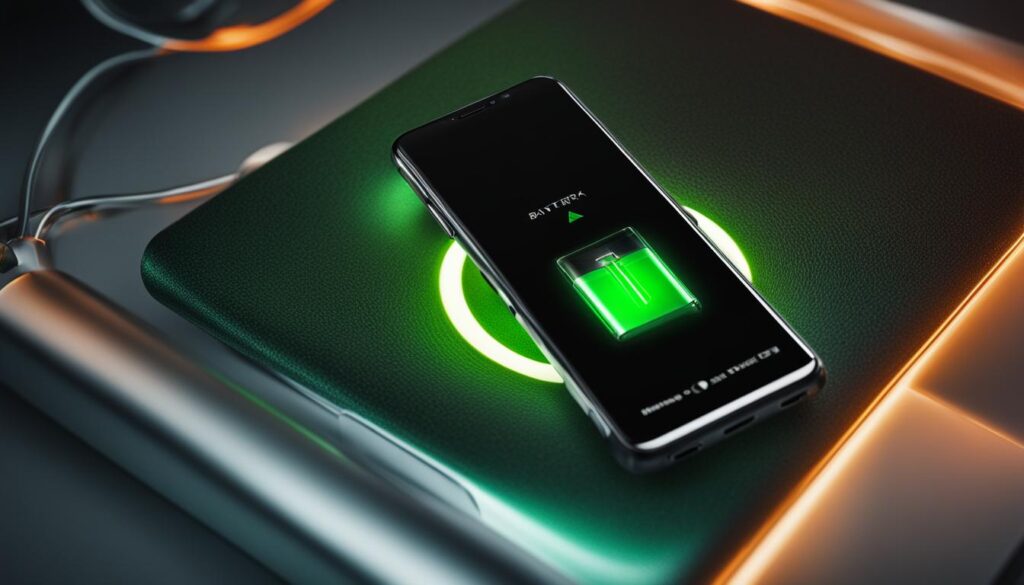
In today’s fast-paced world, smartphone users are constantly on the go and rely heavily on their devices for various tasks. As a result, charging speeds have become a critical factor in determining the user experience. However, there is a delicate trade-off between fast charging and battery health that users should be aware of to ensure the longevity of their device’s battery.
The Trade-Off Between Fast Charging and Battery Health
Fast charging technologies, such as Qualcomm Quick Charge and USB Power Delivery, have revolutionized the way we recharge our smartphones. These technologies allow for rapid charging, reducing the time spent connected to a power source. However, the high charging currents required for fast charging can generate heat, which can negatively impact the overall health of the battery over time.
When a battery is charged at a faster rate, it undergoes higher internal stress, resulting in increased chemical reactions and potential degradation of its components. This can lead to reduced battery capacity and overall performance over the course of the device’s lifespan. It is important for users to find a balance between the convenience of fast charging and the long-term health of their battery.
Technologies Enhancing Battery Life Beyond Charging
Besides charging speeds, there are other technologies and features that can enhance battery life and reduce the reliance on frequent charging. These advancements focus on optimizing the usage and efficiency of the device’s battery. Here are a few notable technologies that contribute to battery life enhancement:
- Power-saving modes: Many smartphones offer various power-saving modes that optimize system performance and restrict background processes, conserving battery life.
- Adaptive brightness: Auto-adjusting brightness levels based on ambient lighting conditions can significantly reduce battery consumption.
- Advanced AI algorithms: Some devices utilize artificial intelligence algorithms to learn user behavior patterns and optimize power usage accordingly.
- Battery health monitoring: Certain smartphones come equipped with built-in battery health monitoring features that provide insights into the battery’s condition, helping users maintain optimal performance.
By leveraging these technologies and implementing battery management practices, users can extend the battery life of their smartphones and minimize the need for frequent charging.
| Charging Speeds | Battery Longevity | Fast Charging Impact | Battery Health | Technologies for Battery Life Enhancement |
|---|---|---|---|---|
| Varies based on device and charging technology | Optimizing charging cycles and reducing heat generation | Improved convenience, reduced charging times | Balancing fast charging with long-term battery health | Power-saving modes, adaptive brightness, AI algorithms, battery health monitoring |
Tips on Maximizing Smartphone Battery Lifespan
Maximizing the lifespan of your smartphone battery is essential for ensuring long-lasting performance. By following these simple tips, you can prolong your battery life and improve overall battery performance:
1. Optimize Settings: Adjusting certain settings on your smartphone can significantly impact battery life. Reduce screen brightness, enable battery-saving mode, and limit background app refresh to conserve power.
2. Manage Apps: Unnecessary background app activity can drain your battery quickly. Close unused apps, disable push notifications for non-essential apps, and regularly update your apps to take advantage of power-saving features.
3. Proper Charging Practices: To prolong the life of your battery, avoid overcharging or letting it drain completely. Instead, aim to keep your battery level between 20% and 80% and use quality chargers and cables to ensure safe and efficient charging.
4. Avoid Extreme Temperatures: Both high and low temperatures can negatively impact battery performance. Keep your smartphone in moderate temperature environments and avoid leaving it in direct sunlight or extreme cold.
By implementing these tips, you can maximize your smartphone battery lifespan and enjoy longer-lasting performance throughout the day. Remember, taking a few simple steps to optimize your usage habits can make a significant difference in prolonging battery life and improving overall battery performance.
Source Links
Best International Cell Phone Coverage Options
Are you tired of struggling with poor cell phone coverage while traveling abroad? Finding the best international cell phone coverage can be a daunting task, with numerous options to choose from. But worry not, as we have got you covered! In this article, we will guide you through the top global mobile network services and reliable worldwide phone plans offered by leading international roaming providers. Discover the secrets to achieving top-notch cellphone coverage abroad and explore the premium global cell service options available. Get ready to experience superior global mobile phone plans and discover the best worldwide cell signal coverage for uninterrupted communication wherever your travels take you.
Key Takeaways:
- There are various international cell phone coverage options to choose from.
- Top global mobile network services offer reliable worldwide phone plans.
- Leading international roaming providers offer premium global cell service options.
- Superior global mobile phone plans ensure the best worldwide cell signal coverage.
- Discover the secrets to achieving excellent overseas cellular coverage.
Understanding International Phone Coverage Basics
Before diving into the best international cell phone coverage options, it’s important to understand some basic concepts. In this section, we’ll explore the fundamentals of international phone coverage, including international roaming, different types of international plans, and how billing works while abroad.
What is International Roaming?
International roaming allows your phone to connect to a foreign network while you are traveling abroad. This enables you to make calls, send texts, and use mobile data even when outside your home country. It ensures that you can stay connected with your contacts and access the internet seamlessly.
Different Types of International Plans
Carriers offer various types of international plans to cater to different travel needs. These plans include:
- Pay-as-you-go options: These plans charge you for usage on a per-minute, per-text, or per-megabyte basis. They are suitable for occasional travelers who want flexibility and control over their expenses.
- Monthly plans with specific allowances: These plans provide a set amount of minutes, texts, and data for a monthly fee. They are ideal for frequent travelers who need a predictable and cost-effective solution.
When selecting an international plan, consider your travel frequency, estimated usage, and budget to choose the right option for you.
How Billing Works While Abroad
Billing for international phone usage may differ from your regular billing at home. When using your phone internationally, additional charges may apply, such as roaming fees and data usage charges. Some considerations regarding billing while abroad include:
- Avoiding unexpected fees: Familiarize yourself with the terms and conditions of your chosen international plan to understand how charges are calculated and minimize the risk of unexpected fees.
- Data usage management: Keep an eye on your data usage to avoid exceeding your plan’s limits or incurring excess charges. Be mindful of data-intensive activities like video streaming or downloading large files.
- Monitoring roaming settings: Check your phone’s settings to ensure that you are connected to a preferred network and not unknowingly using expensive or unreliable networks.
Taking these precautions will help you navigate the billing intricacies associated with international phone usage and make your travel experience more seamless.
The Pioneers of Global Connectivity: Major US Carriers

The major US carriers play a significant role in providing international cell phone coverage. Each carrier has its own approach and perks for international travelers. You can choose the best option for your travel needs by being aware of the international coverage that these major carriers offer.
AT&T’s Approach to International Coverage
AT&T offers comprehensive international coverage with options for travel in Latin and Central America. Whether you’re visiting popular tourist destinations or remote locations, AT&T ensures that you stay connected with their reliable cell service. With AT&T’s international plans, you can enjoy seamless communication and data usage while exploring new horizons.
Verizon’s Global Reach in Cell Service
Verizon boasts a wide global reach, providing reliable cell service in various countries around the world. Their extensive network coverage ensures that you can stay connected in popular travel destinations as well as off-the-beaten-path locations. Verizon’s commitment to global connectivity makes them a top choice for international travelers seeking uninterrupted communication.
T-Mobile’s Travel-Friendly Perks
T-Mobile stands out with its travel-friendly perks, making it an excellent choice for international travelers. With T-Mobile, you can enjoy unlimited data and texting in multiple countries, eliminating the worry of high roaming charges. Whether you’re on a business trip or exploring new cultures, T-Mobile’s travel perks provide the convenience and flexibility you need to stay connected while abroad.
Sprint’s Legacy and Transition to T-Mobile
Sprint, now a part of T-Mobile, has a significant legacy in the telecommunications industry. As the transition to T-Mobile continues, Sprint’s existing international coverage is aligning with T-Mobile’s offerings. This integration provides a seamless experience for travelers, combining T-Mobile’s travel perks with Sprint’s established network coverage. Keep an eye on the evolving services as Sprint transitions to T-Mobile to take advantage of the enhanced international coverage.
Best International Cell Phone Coverage Options
Now that we’ve explored the basics of international phone coverage and the offerings of major US carriers, let’s delve into the best international cell phone coverage options available. We’ll review the top global mobile network services and reliable worldwide phone plans provided by leading international roaming providers. From extensive coverage and high-quality service to competitive pricing and travel perks, these options offer seamless connectivity for international travelers.
| Provider | Service | Coverage | Perks |
|---|---|---|---|
| T-Mobile Go5G Plus Plan | Global mobile network services | Wide coverage in multiple countries | Unlimited data in select destinations |
| Verizon Unlimited Ultimate | Reliable worldwide phone plans | Strong signal in popular travel destinations | No roaming charges for calls and texts |
| AT&T Unlimited Premium | Leading international roaming provider | Comprehensive coverage in major cities | 24/7 customer support and device assistance |
Alternatives to Traditional Providers: Local SIMs and eSIMs

When it comes to international cell phone coverage, there are alternatives to traditional providers that can offer flexibility and cost savings. Two popular options are using local SIM cards or eSIMs. Let’s explore these alternatives and understand their advantages and considerations.
The Rise of eSIM Technology
eSIM technology is gaining popularity among international travelers. With an eSIM, you can purchase and activate a digital SIM card without the need for a physical card. This means you can easily switch between different mobile networks and avoid the hassle of physically changing SIM cards when traveling to different countries.
Advantages of Local SIM Cards
On the other hand, local SIM cards provide a convenient option for travelers. These SIM cards can be purchased in the country of destination, allowing you to have a local phone number and take advantage of local rates and plans. By using a local SIM card, you can enjoy seamless connectivity on local networks and avoid hefty international roaming charges.
Choosing Between eSIM and Local SIM Options
When deciding between eSIM and local SIM options, there are a few factors to consider. Device compatibility is an important consideration, as not all smartphones or devices support eSIM technology. You’ll need to check if your device is eSIM compatible before opting for this option.
Convenience is also a factor, as using an eSIM eliminates the need to physically change SIM cards. However, getting a local SIM card can be a convenient option if you prefer having a local phone number and accessing local plans and rates.
Lastly, desired coverage plays a role in choosing between eSIM and local SIM options. If you’re traveling to multiple countries and require coverage in each location, an eSIM may offer more flexibility. On the other hand, if you’re primarily staying in a specific country, a local SIM card may provide better coverage and network performance.
Ultimately, the choice between eSIM and local SIM options depends on your specific needs and preferences. Exploring these alternatives can help you find the best fit for your international cell phone coverage.
Google Fi: A Game Changer for International Travelers

When it comes to international phone coverage, Google Fi stands out as a game changer for travelers. With its unique features and affordable pricing, Google Fi provides a seamless experience that caters to the needs of international travelers.
With Google Fi, you can enjoy reliable international coverage in over 200 countries. Whether you’re backpacking through Europe or on a business trip to Asia, you can count on Google Fi to keep you connected wherever you go.
One of the standout features of Google Fi is its flexible billing system. Unlike traditional carriers, Google Fi allows you to pay only for the data you use. This means you won’t be locked into expensive plans or face unexpected charges for unused data. It’s a cost-effective solution that ensures you’re getting the most value from your international phone coverage.
But it’s not just the affordability that makes Google Fi a game changer. Google Fi also offers exceptional network coverage, leveraging partnerships with leading carriers to provide a seamless and reliable connection. This means you can make calls, send texts, and browse the web without any worries about dropped calls or slow internet speeds.
Another advantage of Google Fi is its compatibility with a wide range of devices. Whether you have a smartphone, tablet, or even a smartwatch, Google Fi can easily be activated on your device, allowing you to stay connected no matter what device you’re using.
With its innovative approach to international phone coverage and its commitment to customer satisfaction, Google Fi has quickly become a top choice for international travelers. Its user-friendly interface, transparent pricing, and exceptional coverage make it a reliable and convenient option for staying connected while abroad.
The Importance of Data: Staying Connected Abroad
Data plays a crucial role in staying connected while traveling abroad. Whether you’re checking email, using navigation apps, or staying in touch with loved ones, reliable data is essential for modern travel. It ensures that you have access to the information and services you need, no matter where you are in the world.
When it comes to data speeds and reliability, not all carriers are created equal. It’s important to compare the offerings of different providers to ensure that you have a seamless data experience while abroad. Factors to consider include network coverage, data speeds, and customer reviews. By choosing a carrier with reliable data services, you can avoid frustrating interruptions and stay connected throughout your journey.
Managing data usage is another crucial aspect of international travel. Excessive data usage can lead to hefty charges and unexpected bills. To avoid this, it’s important to monitor your data usage and implement strategies to reduce consumption. This can include using Wi-Fi whenever possible, disabling automatic app updates, and minimizing streaming activities. By managing your data usage effectively, you can stay connected without breaking the bank.
Tips For Selecting The Right International Coverage Plan

Selecting the right international coverage plan can be challenging with so many options available. In this section, we’ll provide valuable tips and factors to consider when choosing the best international coverage plan for your needs. From analyzing your travel patterns and destinations to researching carrier offerings and considering budget and convenience, these tips will help you make an informed decision and select the plan that suits you best.
When it comes to selecting the right international coverage plan, there are several key factors to keep in mind:
- Analyze Your Travel Patterns: Take a close look at your travel habits and determine how frequently you’ll be traveling internationally. If you’re a frequent traveler, consider plans that offer unlimited data or discounted rates for frequent usage.
- Consider Your Destinations: If you have specific destinations in mind, investigate the coverage that various carriers provide in those regions. Some carriers may have stronger coverage in certain regions, so it’s important to choose a plan that provides reliable service where you’ll be traveling.
- Research Carrier Offerings: Look into the international coverage options provided by different carriers. Compare their data speeds, call and text rates, and additional features such as access to Wi-Fi hotspots or travel perks. Consider carrier reliability, customer reviews, and overall reputation.
- Factor in Budget and Convenience: Evaluate your budget and determine how much you’re willing to spend on international coverage. Consider whether you prefer the convenience of a pre-paid plan or the flexibility of a pay-as-you-go option. Look for plans that provide value for money and align with your financial preferences.
- Check Device Compatibility: Ensure that your device is compatible with the international coverage plan you’re considering. Some carriers may require specific phones or offer better compatibility with certain device models.
By carefully considering these tips and factors, you’ll be able to select the right international coverage plan that meets your specific needs and ensures seamless connectivity during your travels.
Real User Experiences: From Roaming Charges to Seamless Travel
When it comes to international cell phone coverage, real user experiences provide invaluable insights into the challenges and solutions faced by travelers. Roaming charges have long been a concern for those venturing abroad, but with the right approach, seamless travel is within reach. By gathering feedback from frequent travelers, we can uncover the nuances of international coverage and offer tips to ensure a connected journey. Additionally, understanding how to prepare your phone for international usage is essential for a hassle-free experience.
Travel Stories: Challenges and Solutions
Real user experiences paint a vivid picture of the challenges faced when navigating international cell phone coverage. From unexpected roaming charges to unreliable connections in certain regions, travelers have encountered a range of hurdles. However, these stories also shed light on the solutions that have been found. By sharing these firsthand accounts, we hope to empower others with the knowledge and strategies to overcome such challenges.
Feedback on International Coverage from Frequent Travelers
Frequent travelers have a wealth of knowledge when it comes to international phone coverage. Their experiences can offer valuable insights into the strengths and weaknesses of different providers and plans. By gathering feedback from these seasoned explorers, we can uncover trends, identify standout features, and understand the nuances of international coverage. This feedback serves as a guide for making informed decisions and choosing the right plan for your specific needs.
How to Prepare Your Phone for International Usage
Properly preparing your phone for international usage is crucial to ensure a smooth and connected travel experience. Before your trip, it’s important to check if your phone is unlocked and compatible with international networks. You should also consider purchasing a local SIM card or exploring eSIM options. During your trip, managing data usage and understanding the billing structure of your plan will help you avoid excessive charges. After your trip, it’s essential to review your usage, deactivate any temporary international plans, and switch back to your regular plan. By following these steps, you can optimize your phone’s performance and enjoy seamless connectivity while abroad.
Source Links
Budget-Friendly Phones with Great Cameras
In today’s world, where everyone wants to capture and share every moment, having a smartphone with a great camera has become a necessity. However, premium smartphones with top-notch cameras can often come with a hefty price tag. That’s where budget-friendly phones with great cameras come into play.
Contrary to popular belief, budget smartphones don’t skimp on camera quality anymore. Thanks to advancements in technology and intense competition among manufacturers, budget-friendly phones are now equipped with impressive camera capabilities that can rival even some of the high-end devices on the market.
In this article, we will dive into the world of budget-friendly smartphones with great cameras. We will explore the rising trend of camera-focused budget phones, discuss how the performance gap is closing between premium and budget devices, and provide a snapshot of the best inexpensive smartphones with good camera quality in 2023.
Key Takeaways:
- Budget-friendly phones now offer impressive camera capabilities.
- The performance gap between premium and budget devices is shrinking.
- Inexpensive smartphones with good camera quality are readily available.
- The Google Pixel 7a stands out as a photography powerhouse on a budget.
- Other alternatives like Samsung, Xiaomi, Oppo, and Motorola offer great camera companions.
Unveiling the Best Value: Top Budget Smartphones with High-Quality Cameras
As smartphone technology continues to advance, budget-friendly smartphones have become increasingly capable of delivering high-quality camera performance. Gone are the days when a premium price tag was necessary to capture stunning photos and videos. In this section, we will explore the rise of camera-focused budget smartphones and how the performance gap is closing between premium and budget-friendly camera phones.
The rise of camera-focused budget smartphones
In recent years, smartphone manufacturers have recognized the growing demand for affordable devices with impressive camera capabilities. This shift in consumer preferences has paved the way for the emergence of a new generation of budget smartphones that prioritize photography features without compromising on performance. These devices are equipped with advanced camera sensors, enhanced software processing, and innovative photography modes, offering an excellent value proposition for photography enthusiasts on a tight budget.
How the performance gap is closing between premium and budget-friendly camera phones?
Gone are the days when budget smartphones were associated with subpar camera performance. Thanks to advancements in camera technology and software optimization, budget-friendly devices can now compete with their premium counterparts in terms of imaging capabilities. Features such as multiple camera lenses, high megapixel counts, optical image stabilization, and AI-assisted photography have made their way into budget smartphones, bridging the gap between affordability and quality. As a result, users can enjoy stunning photos, vibrant colors, and detailed shots without breaking the bank.
Inexpensive Smartphones with Good Camera: A 2023 Snapshot
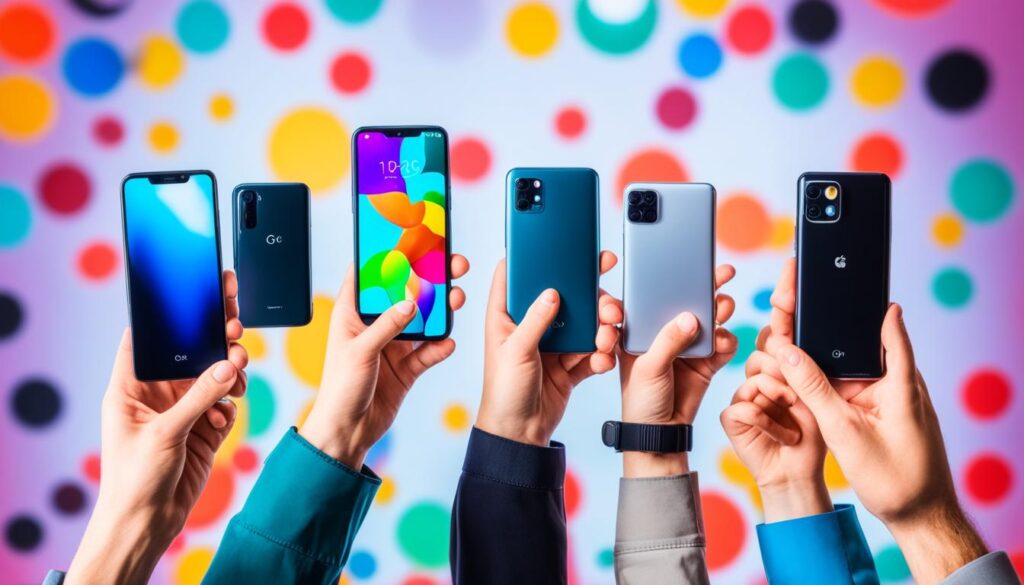
When it comes to budget-friendly smartphones, having a good camera is no longer just a luxury. In fact, in 2023, manufacturers are making significant strides in delivering high-quality cameras at an affordable price point. In this section, we’ll explore some of the top inexpensive smartphones with impressive camera capabilities that are available in the market.
| Smartphone Brand | Camera Specifications | Key Features |
|---|---|---|
| Samsung | Triple camera setup | AI-powered scene optimization, Super Steady mode |
| Xiaomi | Quad camera setup | Night mode, ultra-wide-angle lens |
| Realme | Dual camera setup | Portrait mode, Nightscape mode |
| Honor | Triple camera setup | AI-powered photography, Ultra Clarity mode |
These are just a few examples of the many affordable smartphones that have raised the bar for camera performance. Despite their lower price tags, these devices offer features such as AI scene optimization, night mode, and ultra-wide-angle lenses that allow users to capture stunning photos in various lighting conditions and situations.
Whether you’re a photography enthusiast or simply want to document your everyday moments with ease, these budget-friendly smartphones provide a compelling option for capturing high-quality images without breaking the bank.
The Google Pixel 7a: A Photography Powerhouse on a Budget
The Google Pixel 7a is an impressive budget-friendly smartphone that delivers exceptional photography capabilities. Packed with advanced features and a powerful camera system, the Pixel 7a proves that you don’t have to break the bank to capture stunning photographs.
64MP wide-angle lens: Capturing the bigger picture
Equipped with a 64MP wide-angle lens, the Google Pixel 7a allows you to capture the bigger picture with incredible detail and clarity. Whether you’re photographing landscapes, group shots, or architectural marvels, the wide-angle lens ensures that no detail goes unnoticed.
Enhanced photography with Titan M2 processor and Android 13
Thanks to its powerful Titan M2 processor and the latest Android 13 operating system, the Pixel 7a takes photography to the next level. The advanced processing capabilities ensure faster focus, reduced shutter lag, and improved overall image quality. With Android 13, you’ll also enjoy enhanced camera features and seamless performance.
From daylight to low light: The Pixel 7a’s versatile camera performance
The Google Pixel 7a excels in various lighting conditions, delivering remarkable results both in daylight and low-light environments. With advanced computational photography techniques and Night Sight mode, you can capture stunning low-light shots with incredible detail and minimal noise. Whether it’s a sunset on the beach or a cozy candlelit dinner, the Pixel 7a ensures that every moment is beautifully preserved.
Alternatives to the Pixel: Finding Your Perfect Camera Companion
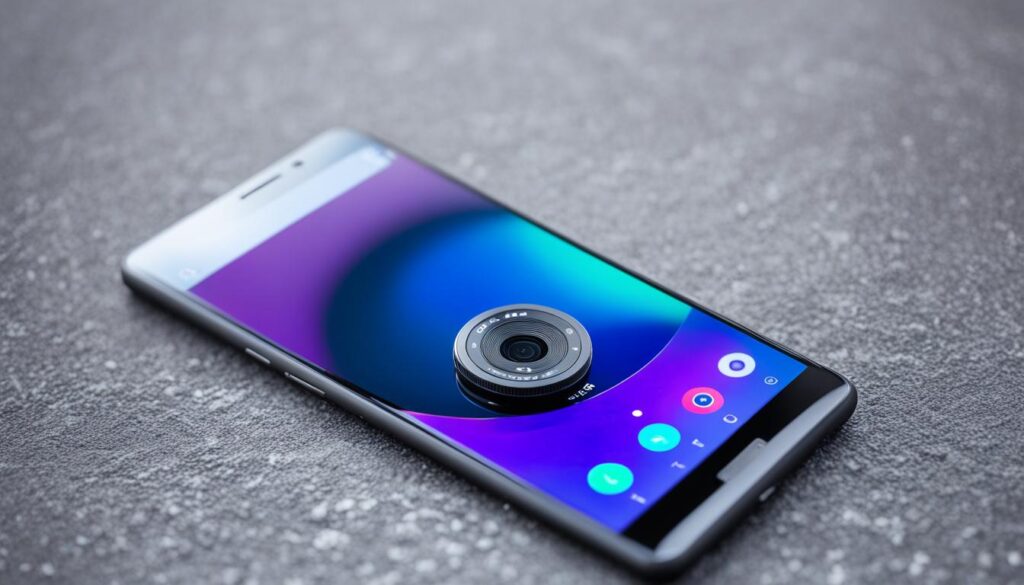
While the Google Pixel 7a offers exceptional camera performance on a budget, there are other smartphones that can be excellent alternatives for photography enthusiasts. These alternatives provide competitive camera capabilities and innovative features at a fraction of the cost. Let’s explore some noteworthy options:
Samsung Galaxy A54 5G: A mid-range contender with quad cameras
The Samsung Galaxy A54 5G combines affordability with impressive camera capabilities. Equipped with a quad-camera setup, including a high-resolution main camera, an ultra-wide lens, a macro lens, and a depth sensor, the A54 5G offers versatile photography options. Its impressive 48MP main camera delivers sharp and detailed images, while the ultra-wide lens allows you to capture stunning landscapes. With advanced photography modes and AI features, the Galaxy A54 5G is a strong contender in the mid-range segment.
Xiaomi and Oppo: Pushing the Bounds of affordable camera tech
Xiaomi and Oppo are two smartphone brands that have gained recognition for their commitment to pushing the boundaries of affordable camera technology. Xiaomi’s devices, such as the Mi 11 Lite and Redmi Note 11 Pro, offer impressive camera setups with high megapixel counts and advanced AI capabilities. Similarly, Oppo’s Reno series, including the Oppo Reno 6 and Reno 5 Pro, offer excellent camera performance with features like AI scene recognition and night mode. These brands continue to provide affordable options without compromising on camera quality or innovation.
How the Motorola Edge 40 Neo excels in low-light environments
The Motorola Edge 40 Neo stands out for its exceptional low-light photography capabilities. With its advanced night mode and dedicated night vision sensor, the Edge 40 Neo captures stunning details and colors even in challenging lighting conditions. The smartphone’s AI algorithms enhance image quality by reducing noise and improving dynamic range, ensuring impressive results in low-light environments. If capturing beautiful night shots is a priority for you, the Motorola Edge 40 Neo is a worthy alternative to consider.
Features that Matter: Key Camera Specifications in Budget Phones
When it comes to choosing a budget smartphone with a great camera, understanding the key camera specifications is essential. These specifications determine the quality and versatility of the photos you can capture. By considering the following features, you can ensure that your budget phone meets your photography needs without breaking the bank.
1. Megapixels: The number of megapixels in a camera sensor affects the level of detail in your photos. While higher megapixels may sound impressive, it’s important to remember that other factors such as sensor size and image processing also play a significant role in image quality.
2. Aperture: The aperture determines the amount of light that enters the camera lens. A wider aperture (smaller f-number) allows more light to reach the sensor, resulting in better low-light performance and the potential for the bokeh effect.
3. Image Stabilization: Optical or electronic image stabilization helps reduce blurriness caused by shaky hands or movement. This feature can greatly improve the clarity of your photos, especially in low-light conditions or while capturing moving subjects.
4. Focus System: Fast and accurate autofocus is crucial for capturing sharp images. Look for features such as phase detection autofocus (PDAF) or dual-pixel autofocus (DPAF) that enable quick and precise focusing on subjects.
5. HDR (High Dynamic Range): HDR technology allows a camera to capture a wider range of colors and tones, resulting in more balanced and vibrant photos. It enhances details in both bright and dark areas of an image, ensuring better exposure overall.
6. Camera Modes and AI: Many budget smartphones now offer advanced camera modes and artificial intelligence (AI) features. These include Night Mode, Portrait Mode, and AI scene recognition. These modes enhance your photography experience and allow you to experiment with different styles and effects.
7. Video Features: If you’re interested in capturing videos, consider the resolution, frame rate, and stabilization options offered by the camera. Look for features like 4K recording, slow-motion, or time-lapse capabilities to make your videos stand out.
To give you a better understanding of how these camera specifications vary among different budget phones, take a look at the table below:
| Phone Model | Megapixels | Aperture | Image Stabilization | Focus System | HDR | Camera Modes and AI | Video Features |
|---|---|---|---|---|---|---|---|
| Brand A | 12 | f/1.8 | Optical | PDAF | Yes | Night Mode, Portrait Mode | 1080p@30fps |
| Brand B | 16 | f/1.6 | Electronic | DPAF | Yes | Night Mode, AI Scene Detection | 4K@30fps, 1080p@60fps |
| Brand C | 20 | f/1.7 | Electronic | PDAF | Yes | Night Mode, Portrait Mode | 4K@30fps, 1080p@120fps |
By referring to this table, you can compare the camera specifications of budget smartphones and make an informed decision that aligns with your photography preferences. Keep in mind that while higher specifications can indicate better camera performance, the overall user experience and image processing capabilities also play crucial roles in capturing stunning photos.
The Real Deal on Megapixels and Camera Software
![]()
When it comes to budget smartphone photography, understanding the relationship between megapixels and camera software is key to capturing high-quality photos.
Understanding megapixel marketing: What really counts for quality photos?
The number of megapixels often becomes a focal point when comparing smartphone cameras. However, it’s important to note that megapixels alone do not guarantee superior image quality. While more megapixels can result in higher resolution images, factors like sensor size and pixel size also play a significant role in determining the overall image quality.
When comparing budget smartphones, consider the balance between megapixels and other camera specifications. A larger number of megapixels may not always translate to better photos if the camera’s hardware and software do not work in harmony.
The role of software in enhancing budget smartphone photography
Camera software is a crucial element that can significantly impact the performance of a budget smartphone camera. Manufacturers invest in software optimization to improve image processing capabilities, resulting in better color accuracy, dynamic range, and noise reduction.
In addition to hardware considerations, camera software plays a crucial role in implementing features like HDR (High Dynamic Range), night mode, portrait mode, and other advanced shooting modes. These software-driven enhancements work alongside the camera’s hardware to maximize the potential of budget smartphones, delivering impressive results without compromising on affordability.
Summary
While megapixels are an important factor in smartphone photography, it’s crucial to consider the overall camera system, including hardware and software optimization. By understanding the interplay between megapixels and camera software, consumers can make informed decisions when choosing a budget smartphone that delivers exceptional photography performance without breaking the bank.
Practical Advice for Picking the Best Budget Camera Phone for Your Needs
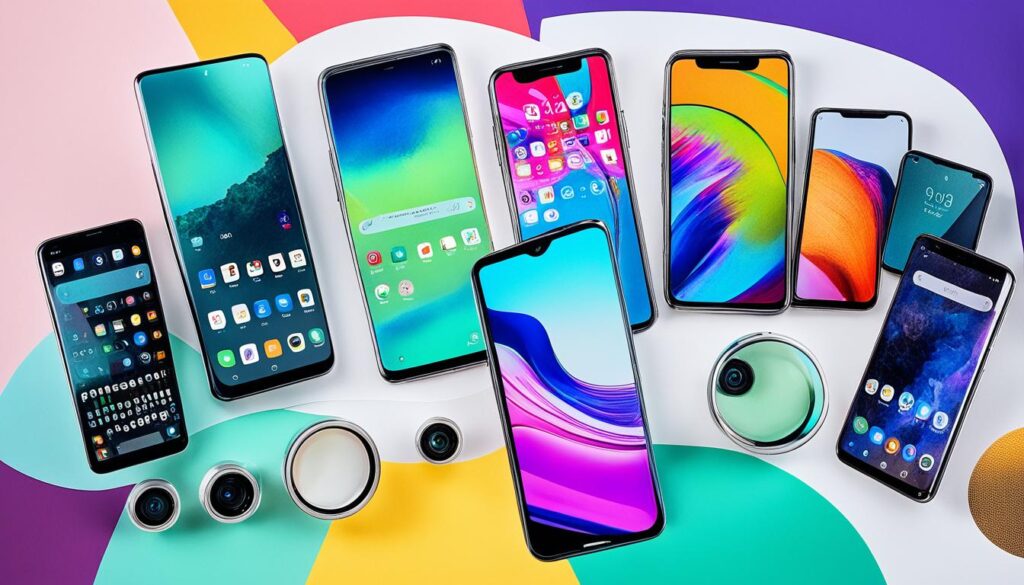
When considering a budget camera phone, it’s essential to look beyond just the camera specs. While camera performance is undoubtedly crucial, several other factors can greatly impact your overall experience. We’ve outlined some practical advice to help you make an informed decision.
Considerations beyond the camera: Battery life, storage, and display quality
While the camera is a top priority, it’s important not to overlook other essential features. Ensure the phone has a reliable battery life that can keep up with your photography sessions. Look for devices with ample storage space to accommodate your growing collection of high-resolution images. Additionally, a vibrant display with accurate color reproduction will enhance your viewing experience when reviewing and editing photos.
The significance of post-processing features and manual controls
Post-processing features and manual controls can significantly enhance the capabilities of a budget camera phone. Look for phones that offer a variety of editing options, such as adjusting exposure, color balance, and applying filters. Manual controls for shutter speed, ISO, and focus give you more creative freedom and allow you to fine-tune your shots. These features can elevate your photography skills and make your budget camera phone feel like a premium device.
Choosing the best budget camera phone involves considering factors beyond the camera specifications. Battery life, storage capacity, display quality, post-processing features, and manual controls all play a significant role in delivering an exceptional photography experience. By taking these aspects into account, you can find a budget-friendly device that meets your needs and captures stunning images.
Why Features like Night Sight and Magic Eraser set the Google Pixel 7a Apart
When it comes to budget-friendly smartphones with exceptional camera capabilities, the Google Pixel 7a stands out from the crowd. Armed with innovative features like Night Sight and Magic Eraser, this device takes mobile photography to the next level.
Unlocking the potential of night photography with advanced AI
Capturing stunning photos in low-light conditions can be a challenge for many budget smartphones. However, the Pixel 7a’s Night Sight feature utilizes advanced AI algorithms to deliver astounding results even in the darkest of environments. With Night Sight, you can say goodbye to grainy and blurry night shots, as the camera intelligently combines multiple exposures to produce well-lit, sharp, and vibrant images, highlighting every detail.
How features like Magic Eraser can transform your mobile photo editing experience
Edit and enhance your photos effortlessly with the Pixel 7a’s Magic Eraser feature. Removing unwanted objects or people from your images has never been easier. Simply select the area you want to erase, and let the Pixel 7a’s AI-powered algorithms work their magic. The result? Flawless photos that capture the moment just as you intended, free from any distractions. With Magic Eraser, you have the power to create picture-perfect memories.
Source Links
Control Another Mobile With Your Own Device
Have you ever wished you could remotely access and control another mobile device using your own device? Whether you’re a tech-savvy professional managing multiple devices or a concerned parent wanting to monitor your child’s activities, the ability to control another mobile device remotely is a game-changer. In this article, we will explore the different methods and technologies available for controlling another mobile device using your own device. From basic screen sharing solutions to full remote access, we will discuss the steps, safety precautions, and advanced features that can enhance your ability to manage devices remotely.
Key Takeaways:
- Remote control of mobile devices is becoming increasingly important in our digital age.
- There are various methods and technologies available for controlling another mobile device using your own device.
- Safety precautions are crucial when accessing and managing devices remotely.
- Screen sharing solutions and remote assistance tools offer different levels of control and guidance.
- Advanced features such as real-time screen monitoring and device compatibility enhance the remote control experience.
Understanding the Basics of Mobile Remote Control
Mobile remote control allows users to operate and manage another mobile device using a separate device. This technology enables remote access and control of various functions, settings, and applications on the target device. By understanding the workings of mobile remote control and implementing necessary safety precautions, users can effectively manage and assist with the operation of other devices.
What is Mobile Remote Control?
Mobile remote control refers to the capability to remotely access and control another mobile device using a separate device. It allows users to handle various tasks on the target device from a distance, including opening applications, adjusting settings, and even controlling functions such as screen sharing and capturing screenshots.
The Technology Behind Controlling Another Mobile Device
The technology behind mobile remote control relies on a combination of software and network connectivity. Through the use of compatible applications and communication protocols, users can establish a connection between their device and the target device. This connection enables the transmission of commands, data, and screen information, allowing for seamless remote control of the target device.
Safety Precautions and Permissions
When engaging in mobile remote control, it is essential to take safety precautions to protect both the controlling and target devices. Some safety measures include:
- Ensuring that the remote control application is secure and reputable
- Using strong and unique passwords for access
- Regularly updating software and applications to the latest versions
- Implementing two-factor authentication for added security
- Restricting remote control access to trusted individuals
Additionally, users must obtain the necessary permissions on the target device to enable remote access and control. This typically involves granting accessibility permissions to the controlling device, allowing it to interact with the target device’s features and functions in a remote capacity.
Remote Guidance Without Full Control: Screen Sharing Solutions

Screen sharing solutions provide a practical way to offer remote assistance without the need for full control over the target device. With the increasing reliance on digital communication, platforms like Google Meet and messaging apps like WhatsApp have integrated screen sharing features that allow users to guide others through a series of steps or troubleshoot issues remotely. Whether you’re helping a family member, colleague, or client, these screen sharing solutions offer convenience and efficiency in remote assistance.
Guide to Using Google Meet for Remote Assistance
Google Meet is a widely used video conferencing platform that offers a built-in screen sharing feature. Here’s a step-by-step guide to using Google Meet for remote assistance:
- Start a Google Meet session by joining or creating a meeting.
- Once the meeting is in progress, click on the “Present now” option located at the bottom of the screen.
- Select “A window” to share a specific application or choose “Your entire screen” to share your entire desktop.
- Click “Share” to begin screen sharing with the other participants.
- Guide the other person through the necessary steps while they follow along on their screen.
By following these simple steps, you can effectively provide remote guidance using Google Meet’s screen sharing feature.
WhatsApp’s Role in Simplifying Remote Help
WhatsApp is a popular messaging app that also offers screen sharing capabilities, making it a convenient choice for remote assistance. Here’s how you can use WhatsApp to simplify the process of remote help:
- Open a chat with the person you want to assist.
- Tap the attachment icon (paperclip) in the chat window.
- Select “Document” and choose a document or file that contains the instructions or steps you want to share.
- The other person can then open the document and follow the instructions while you provide guidance through the chat.
WhatsApp’s document sharing feature allows for a seamless remote assistance experience, especially when guiding someone through a series of steps or troubleshooting.
| Platform | Features |
|---|---|
| Google Meet | Screen sharing, real-time collaboration, and video conferencing |
| Document sharing, chat-based guidance |
Step-by-Step Guide to Set Up AirMirror for Remote Assistance
AirMirror is a powerful remote assistance tool that enables users to fully control another mobile device from their own device. Setting up AirMirror is a straightforward process that requires a few simple steps. By following this step-by-step guide, you’ll be able to quickly configure AirMirror and start providing remote assistance to others.
To begin the AirMirror setup, follow the instructions below:
- Open the Google Play Store (Android) or the App Store (iOS) on your device.
- Search for “AirMirror” and install the AirMirror app on your device.
- Once the app is installed, open it and create a new account or sign in with your existing AirDroid account.
- On the AirMirror app, tap on the “Add Device” button to add the device you want to control remotely.
- Follow the on-screen instructions to connect your device to the target device. This may involve scanning a QR code or entering a provided code.
- Once the connection is established, you can now navigate the interface of the target device and provide remote assistance.
With AirMirror set up on your device, you can easily assist others by remotely accessing their mobile devices. Whether it’s troubleshooting issues, demonstrating features, or managing settings, AirMirror provides a seamless and efficient way to offer remote assistance.
Can I Operate Another Mobile From My Mobile: Full Remote Access Explained

Full remote access allows users to operate and control another mobile device from their own device with complete control. With the advancements in technology, it is now possible to remotely control and manage another mobile device using various applications and tools. One such tool is AirDroid, which offers a range of remote features for seamless device management.
Enabling Full Control with AirDroid Remote Features
AirDroid is a popular remote access application that provides users with the ability to control another mobile device remotely. By installing the AirDroid app on both the controlling and target devices, users can establish a secure connection and gain full control over the target device. AirDroid’s intuitive interface and user-friendly features make it easy to navigate and operate the remote device.
Some of the key features offered by AirDroid include:
- Screen Mirroring: Users can view and interact with the screen of the target device in real-time, allowing for seamless navigation and control.
- File Transfer: AirDroid enables users to transfer files between their own device and the remote device, making it convenient to access and share files remotely.
- Notifications and SMS Management: Users can receive and respond to notifications and SMS messages from the remote device, ensuring uninterrupted communication.
- App Management: AirDroid allows users to remotely install, uninstall, and update applications on the target device, simplifying the app management process.
These remote features offered by AirDroid empower users with comprehensive control over another mobile device, making it possible to perform various tasks and actions remotely.
Understanding Device Compatibility and Requirements
While AirDroid offers a wide range of remote features, it is important to consider device compatibility and requirements. To ensure a seamless remote control experience, both the controlling and target devices must meet the following criteria:
- Operating System Compatibility: AirDroid is compatible with both Android and iOS devices, but certain features may be limited on specific operating systems. It is recommended to check the AirDroid website or documentation for the latest compatibility information.
- Network Connectivity: Both the controlling and target devices must be connected to the internet, either through Wi-Fi or mobile data, for the remote control connection to be established.
- Device Permissions: The controlling device must have the necessary permissions granted to establish a remote control connection with the target device. These permissions can typically be granted during the initial setup process.
By ensuring device compatibility and meeting the necessary requirements, users can make the most of AirDroid’s remote features and enjoy a seamless remote control experience.
Ending a Full-Control Session Safely
When the remote control session is complete, it is important to end it safely to maintain privacy and security. To properly end a full-control session with AirDroid, follow these guidelines:
- Disconnect the Remote Control Connection: In the AirDroid app, navigate to the remote control interface and select the option to disconnect the remote control connection. This will sever the connection between the controlling and target devices.
- Clear any Cached Data: It is recommended to clear any cached data or temporary files associated with the remote control session to ensure sensitive information is not stored on the controlling device.
- Logout from AirDroid: To further enhance security, consider logging out of the AirDroid app on the controlling device, especially if it is a shared device or used by multiple users.
Following these guidelines will help ensure the safe and responsible use of AirDroid’s full remote access features, safeguarding both the controlling and target devices’ privacy and security.
Alternatives for Remote Mobile Management
While AirMirror and AirDroid are popular options for remote mobile management, there are other alternatives available that offer unique features and capabilities. Two notable alternatives are TeamViewer and Splashtop SOS.
TeamViewer: PC to Mobile Control
TeamViewer is a well-known remote management solution that allows users to control a mobile device from their computer. With TeamViewer, you can effortlessly access and manage a mobile device remotely, providing you with the ability to troubleshoot issues, transfer files, and perform various tasks.
One of the key advantages of TeamViewer is its seamless integration between PC and mobile devices. This allows for efficient collaboration and support, enabling you to offer assistance even when you are not physically present with the device. Whether you need to provide technical support or access your mobile device from a different location, TeamViewer offers a reliable and user-friendly solution.
Splashtop SOS for Comprehensive Support
Splashtop SOS is another powerful remote support tool that provides comprehensive features for remote access and control of various devices. With Splashtop SOS, you can securely connect to and manage mobile devices, allowing you to troubleshoot and resolve issues remotely.
One notable feature of Splashtop SOS is its ability to support different platforms, including iOS, Android, Windows, and macOS. This cross-platform compatibility ensures that you can provide support to a wide range of devices, regardless of the operating system they are running. Splashtop SOS also offers additional features such as file transfer, remote printing, and chat functionality, further enhancing the support experience.
Whether you choose TeamViewer or Splashtop SOS, these alternatives for remote mobile management provide robust solutions that enable seamless control and support of mobile devices.
Real-Time Screen Monitoring with One-Way Audio
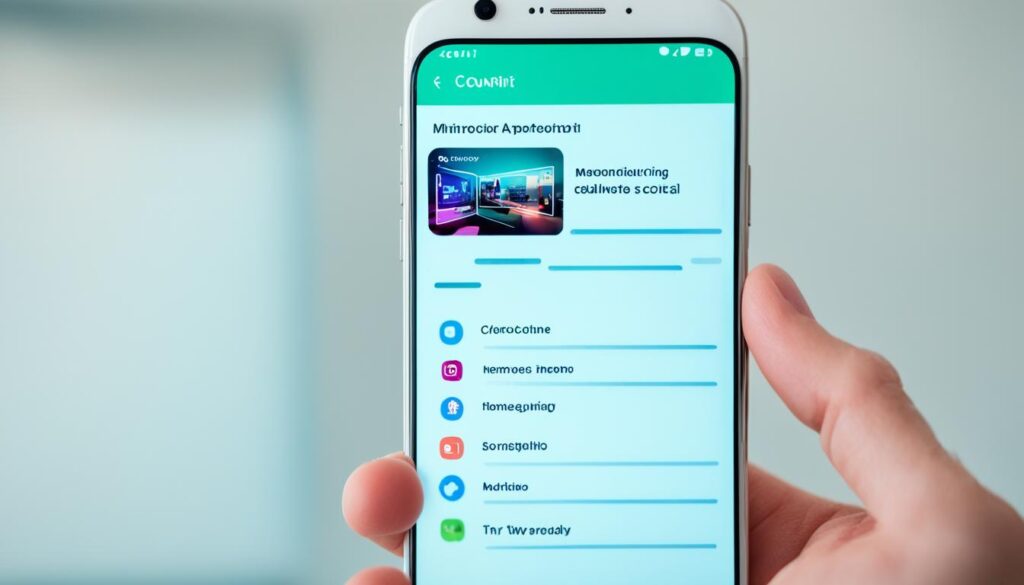
Real-time screen monitoring with one-way audio is a powerful feature that allows users to remotely view the screen of a mobile device in real-time while also having the ability to hear the surrounding sounds. This functionality is particularly useful for monitoring purposes or when providing remote support that requires audio feedback. By utilizing real-time screen monitoring with one-way audio, users can stay connected and actively monitor the activities on a remote device.
One-way audio enables users to hear the sounds from the remote device without transmitting any audio from their own device. This ensures privacy and prevents any disruptions during the monitoring process. Whether you need to keep an eye on your child’s online activities or provide real-time support to a colleague or client, this feature offers enhanced flexibility and convenience.
The combination of real-time screen monitoring and one-way audio provides a comprehensive solution for remote screen monitoring. It allows users to observe the actions and movements on a remote device while also listening to the audio feedback, providing a complete and immersive monitoring experience.
With real-time screen monitoring, users can identify any issues or potential risks immediately, making it an invaluable tool for parental control, employee monitoring, or troubleshooting technical problems. Additionally, the ability to hear the surrounding sounds provides contextual information that can aid in understanding the situation and providing accurate assistance.
By leveraging this feature, businesses can streamline their remote support processes and troubleshoot technical issues effectively. Customer support representatives can remotely access and monitor customer devices, ensuring a smoother and more efficient support experience. This capability greatly reduces the need for physical interventions and allows for quicker issue resolution.
To give you a visual representation of real-time screen monitoring with one-way audio, take a look at the example below:
| Benefits of Real-Time Screen Monitoring with One-Way Audio |
|---|
| Immediate identification of issues or risks |
| Enhanced remote troubleshooting capabilities |
| Improved parental control and monitoring |
| Streamlined remote support processes |
| Efficient employee monitoring |
Real-time screen monitoring with one-way audio is a valuable feature that offers numerous applications in various areas, including security, support, and monitoring. By leveraging this technology, users can remotely monitor and assist with the performance of mobile devices, ensuring better control and efficiency.
Remote Assistance with AirMirror
AirMirror, known for enabling full remote control of mobile devices, also offers robust features for remote assistance. With AirMirror, you can provide seamless support to others by offering step-by-step guidance, troubleshooting, and resolving issues remotely.
Whether you need to help a family member with a technical problem or provide assistance to a colleague on the go, AirMirror streamlines the process by allowing you to take control of their device remotely, just as if you were physically present.
Using AirMirror for remote assistance is straightforward. Simply follow these steps:
- Ensure that both your device and the target device have AirMirror installed.
- Establish a connection between the two devices using the AirMirror app.
- Once connected, you can begin providing live guidance, troubleshooting, and support remotely.
With AirMirror’s remote assistance features, you can visually guide users through complex tasks, highlight important areas on their screens, and offer real-time support, making remote troubleshooting more efficient and effective.
By leveraging AirMirror’s remote assistance capabilities, you can enhance your ability to provide prompt and reliable support, regardless of the geographical distance between you and the device in need of assistance.
Now, let’s explore the advanced features and functionalities of different remote control applications in the subsequent section.
Advanced Features of Remote Control Applications
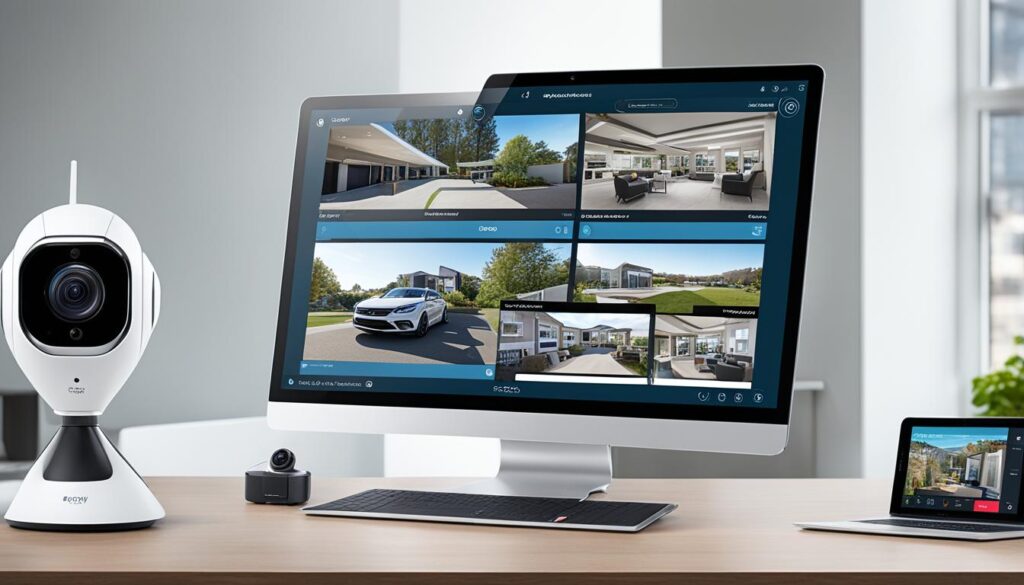
Remote control applications offer advanced features that go beyond basic remote access. These features provide users with enhanced control and functionality when managing other devices remotely. In this section, we will explore some of the advanced features offered by remote control apps, including:
Controlling Devices with Non-Rooted Settings
Traditionally, remote control of devices required rooting, which is the process of gaining administrative access to the device’s operating system. However, modern remote control apps now offer the ability to control devices without the need for root access. This means that users can remotely manage and control non-rooted devices, providing greater convenience and accessibility.
Turning Your Mobile into a Security Camera
Another advanced feature offered by remote control apps is the ability to turn your mobile device into a security camera. This feature allows you to use your smartphone’s camera to monitor a specific area remotely. Whether you want to keep an eye on your home, office, or any other location, turning your mobile into a security camera provides a simple and cost-effective solution for remote surveillance.
Real-Time Screen Checking with Screen Mirroring
Screen mirroring is a powerful feature that allows you to check the screen of a remote device in real-time. With this feature, you can see exactly what is happening on the screen of the controlled device as if you were physically holding it. This is particularly useful for providing technical support or troubleshooting issues remotely, as you can directly observe the actions and behavior of the device in real-time.
By utilizing these advanced features, users can enhance their remote control capabilities and effectively manage and control devices even without root access. Whether it’s controlling non-rooted devices, turning a mobile device into a security camera, or performing real-time screen checking, remote control apps offer a range of powerful functionalities that simplify and streamline the remote management experience.
The Future of Remote Mobile Interaction
The field of remote mobile interaction is constantly evolving, driven by advancements in technology and changing user needs. As more people rely on their mobile devices for various tasks, the ability to remotely control and manage these devices becomes increasingly important. In this section, we will explore the emerging trends in mobile device support and highlight the growing importance of mobile device security in the context of remote control and management.
Trends in Mobile Device Support
As the demand for remote mobile interaction continues to grow, several trends are shaping the way devices are supported. One of the key trends is the shift towards cloud-based management solutions. Cloud-based platforms allow for seamless device management across multiple locations, reducing the need for physical access to devices. This enables organizations and individuals to efficiently control and support mobile devices remotely.
Another trend is the integration of artificial intelligence (AI) and machine learning (ML) capabilities into remote support applications. AI and ML technologies can analyze device data, identify patterns, and provide proactive recommendations for troubleshooting and optimizing device performance. This not only improves the efficiency of remote support but also enhances the overall user experience.
Furthermore, there is a growing focus on the interoperability of devices across different operating systems and platforms. With the increasing diversity of mobile devices, it is crucial for remote control and management solutions to support a wide range of devices, including smartphones, tablets, and wearable devices, regardless of the operating system or manufacturer.
The Growing Importance of Mobile Device Security
As remote mobile interaction becomes more prevalent, ensuring the security of mobile devices is of utmost importance. With the increased access and control capabilities that remote control applications provide, it is essential to implement robust security measures to protect sensitive data and mitigate risks.
Mobile device security involves various aspects, including data encryption, secure authentication methods, and regular security updates. It is crucial for remote control applications to incorporate strong encryption protocols to safeguard data during transmission. Additionally, requiring secure authentication methods, such as two-factor authentication, adds an extra layer of protection to prevent unauthorized access to devices.
In today’s interconnected world, where remote control applications rely on internet connectivity, it is vital to keep devices up-to-date with the latest security patches and firmware updates. Regularly updating devices helps address vulnerabilities and strengthen device security, diminishing the risk of unauthorized access or data breaches.
By staying informed about emerging trends in mobile device support and prioritizing mobile device security, individuals and organizations can optimize their remote control and management practices. The future of remote mobile interaction holds great potential for enhanced productivity and efficiency, provided that the necessary measures are taken to ensure secure and reliable operations.
Understanding the Role of Accessibility Permissions in Remote Access

Accessibility permissions are essential for enabling remote control features on mobile devices. These permissions grant the necessary access and authority to manage and operate another device remotely. With the right accessibility settings, users can securely control various functions, applications, and settings on a target device without needing physical access.
Why Accessibility is Key for Remote Control Features
Accessibility permissions play a vital role in remote control features by providing the necessary framework for seamless communication between the controlling and target devices. Without these permissions, remote control applications would not be able to share screens, interact with applications, or perform tasks remotely. Accessibility permissions enable users to navigate and control other devices as if they were physically present, empowering efficient remote assistance, troubleshooting, and device management.
How to Manage Accessibility Settings for Safe Remote Access
Managing accessibility settings is crucial to ensure safe and secure remote access. By carefully configuring these settings, users can maintain control over which applications can access accessibility features and prevent unauthorized access to sensitive information. Here are some steps to effectively manage accessibility settings for safe remote access:
- Open the device’s settings menu and navigate to the accessibility or accessibility services section.
- Select the specific accessibility permissions you want to manage for remote control applications.
- Review the list of installed applications and grant accessibility permissions only to trusted and reputable remote control tools.
- Regularly check for updates and security patches for both the remote control application and the device’s operating system.
- Enable additional security features such as two-factor authentication and biometric login for enhanced protection.
- Regularly review and audit the accessibility permissions granted to installed applications to ensure continued safe remote access.
By following these steps, users can effectively manage accessibility settings, protecting their privacy and security while enjoying the benefits of remote control features.
| Key Points | Benefits |
|---|---|
| Accessibility permissions are crucial for enabling remote control features on mobile devices. | Allows for seamless remote assistance, troubleshooting, and device management. |
| Managing accessibility settings ensures safe and secure remote access. | Prevents unauthorized access and maintains control over sensitive information. |
| Reviewing and auditing accessibility permissions regularly is important for continued safe remote access. | Provides ongoing protection and privacy for users. |
Comprehensive Guide to Using Splashtop SOS

Splashtop SOS is a powerful remote access and support tool that provides a comprehensive solution for managing devices remotely. Whether you need to assist a colleague, troubleshoot technical issues, or provide training, Splashtop SOS offers a user-friendly interface and a wide range of features to enhance your remote support experience.
Navigating the Splashtop Interface for Remote Access
When using Splashtop SOS, you’ll find that the interface is intuitive and easy to use. To get started, simply launch the Splashtop Business app on your device and log in to your account. From the main dashboard, you can access all the necessary tools and options for remote access.
One of the key features of the Splashtop interface is the ability to view and manage a list of devices that are connected to your account. This gives you a clear overview of the devices you have access to and allows you to quickly establish remote connections.
Additionally, Splashtop offers a streamlined navigation menu that allows you to easily switch between different devices and access various remote support options. From screen sharing to file transfer, you’ll find everything you need to provide efficient and effective remote assistance.
Features and Tools Within Splashtop Business App
Within the Splashtop Business app, you’ll find a wide range of features and tools that enhance your remote access capabilities. These include:
- File Transfer: Easily transfer files between your device and the remote device with just a few clicks.
- Chat Functionality: Communicate with the user of the remote device through a built-in chat feature, allowing for real-time collaboration and troubleshooting.
- Multi-Monitor Support: If the remote device has multiple monitors, Splashtop allows you to view and control each monitor individually.
- Remote Printing: Print documents directly from the remote device to a local printer, eliminating the need for file transfers.
- Session Recording: Record your remote sessions for future reference or training purposes.
These features, along with many others, make Splashtop SOS a comprehensive remote access solution that caters to the needs of both individuals and businesses.
With its user-friendly interface, robust features, and reliable performance, Splashtop SOS is an ideal choice for anyone looking to streamline their remote support process. Whether you need to troubleshoot technical issues, provide training, or collaborate with colleagues, Splashtop SOS has you covered.
Best Practices for Ending Remote Sessions
Ensuring Privacy Post-Remote Assistance
After assisting someone remotely, it’s important to take necessary steps to ensure privacy and protect sensitive information. Here are some best practices to follow:
1. Inform the user: Before ending the remote session, let the user know that you will disconnect and will no longer have access to their device. This will give them peace of mind and build trust in the process.
2. Close all applications: Make sure to close any applications or programs that were used during the remote session. This helps to prevent any accidental access to the user’s device or data.
3. Clear temporary files and cache: To further protect privacy, clear temporary files and cache that may have been created during the remote session. This will ensure that no residual data remains on the user’s device.
Measures for Disconnecting and Resetting Applications
When disconnecting and resetting remote control applications, here are some measures to consider:
1. Log out: Always log out from the remote control application or software to ensure that there is no ongoing connection between your device and the user’s device.
2. Reset permissions: If the remote control application has permission settings, consider resetting them to their default state. This will revoke any access or permissions granted during the remote session.
3. Uninstall if necessary: If you no longer require the remote control application on the user’s device, it is advisable to uninstall it to completely remove any potential access points.
By following these best practices for ending remote sessions, you can maintain privacy, security, and build trust with the users you assist remotely.
Source Links
Understanding Mobile Phones vs. Smartphones
Are you confused about the difference between a mobile phone and a smartphone? Do you find yourself wondering what sets these devices apart, and why some people prefer one over the other? In this article, we will uncover the nuances of mobile phones and smartphones to help you gain a better understanding of their functionalities and features.
Over the years, mobile phones and smartphones have become an integral part of our lives, revolutionizing the way we communicate, work, and stay connected. Yet, many still use these terms interchangeably, unaware of the distinctions that set them apart.
In this article, we will delve into the evolution of communication devices, from the early days of mobile phones to the development of modern smartphones. We will define what a mobile phone is, explore its core functions, and discuss the impact it has had on connectivity. We will also examine the different operating systems used in mobile phones and how they contribute to the overall functionality of the device.
But here’s a thought-provoking question: are all mobile phones smartphones? Stay tuned as we debunk this common misconception and clarify the differences between the two. We will unveil the sophistication of smartphones, discussing their advanced computing capabilities, the integration of modern technology, and the role of smart operating systems.
Furthermore, we will highlight the divergence in phone functionality and user experience, addressing the varying needs and preferences of users. Finally, we will conclude with insights into future trends and advancements in mobile and smart devices, helping you make informed decisions when choosing between a mobile phone and a smartphone.
Key Takeaways:
- Mobile phones and smartphones have distinct differences in functionalities and features.
- Understanding the evolution of communication devices provides valuable insights into the development of mobile phones and smartphones.
- Mobile phones have impacted connectivity and transformed the way we communicate.
- Smartphones offer advanced computing capabilities and integration of modern technologies.
- The choice between a mobile phone and a smartphone depends on individual preferences and needs.
The Evolution of Communication Devices
In this section, we will take a journey through the history of communication devices, tracing the evolution from the early days of mobile phones to the development of smartphones. The rapid advancements in technology have revolutionized the way we communicate and interact with the world around us. Let’s dive in and explore the fascinating story behind these revolutionary devices.
It all began with the invention of the telephone by Alexander Graham Bell in 1876. This groundbreaking invention allowed people to communicate over long distances, marking a significant milestone in the history of communication. However, telephones were large, fixed devices that required physical connections, limiting their portability and accessibility.
The birth of mobile phones in the 20th century changed everything. These devices freed us from the constraints of wired communication, enabling us to make calls from anywhere, anytime. Motorola introduced the “brick phone,” the first commercially available mobile phone, in 1983. It was large and bulky, but it laid the foundation for the future of mobile communication.
Over the years, mobile phones became smaller, sleeker, and more affordable. They incorporated new technologies and features, such as text messaging and caller ID, making communication more convenient and efficient. From flip phones to slider phones, mobile phones evolved to cater to different preferences and styles.
However, it wasn’t until the late 2000s that smartphones emerged and transformed the landscape of communication devices. Smartphones combined the functionality of a mobile phone with advanced computing capabilities, offering a wide range of features beyond calling and texting. They introduced touchscreens, internet connectivity, and app stores, allowing users to access information, entertainment, and social media on the go.
Today, smartphones have become an indispensable part of our lives. They empower us to stay connected with friends and family, navigate through unfamiliar places, capture precious moments through high-quality cameras, and access an infinite amount of knowledge at our fingertips. The continuous evolution of smartphones has opened up endless possibilities, with technologies like artificial intelligence, virtual reality, and 5G shaping the future of mobile communication.
As we move forward, it’s important to reflect on the journey of communication devices and appreciate the incredible advancements that have brought us to where we are today. The evolution of mobile phones into smartphones has revolutionized the way we connect with the world, and it will continue to shape the future of communication.
Defining the Mobile Phone and Its Core Functions
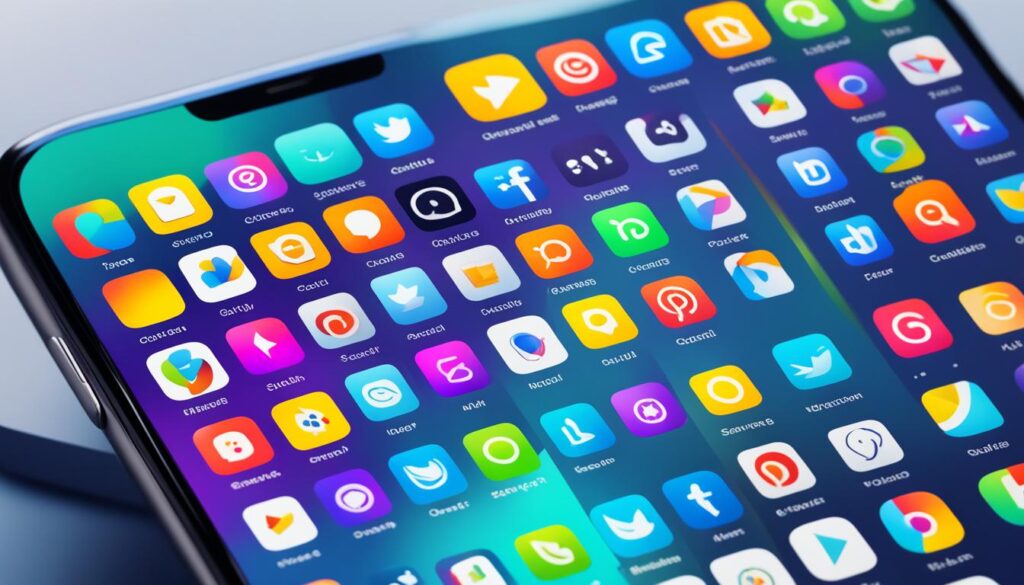
In this section, we will explore the definition of a mobile phone and its core functions. Mobile phones have become an integral part of our lives, providing us with a variety of features and capabilities that enable communication, connectivity, and convenience. Let’s dive deeper into the world of mobile phones.
Basic Features of Traditional Cellphones
Traditional cellphones, also known as feature phones, are the predecessors of modern smartphones. They offer essential functionalities that allow users to make calls, send text messages, and store contacts. These devices typically have a physical keypad for input and a small monochrome or color screen for display.
Some basic features of traditional cellphones include:
- Making and receiving phone calls
- Sending and receiving text messages
- Storing contacts
- Alarm clock
- Calculator
- Calendar
These basic features of traditional cellphones provide users with essential communication and organizational capabilities. While they lack the advanced functionalities of smartphones, they serve as reliable communication devices for those who prefer a simpler user experience.
Impact of Mobile Phones on Connectivity
The advent of mobile phones has had a profound impact on connectivity and how we interact with others. Mobile phones have revolutionized the way we communicate and stay connected, bridging geographical distances and enabling real-time communication.
With mobile phones, we can:
- Make phone calls to anyone, anywhere
- Send instant text messages and multimedia messages
- Access the internet and browse websites
- Stay connected through social media platforms
- Send and receive emails on the go
Mobile phones have become an indispensable tool for social connectivity, allowing us to communicate with friends, family, and colleagues regardless of our physical location. They have transformed the way we share information, stay informed, and maintain relationships.
Mobile Phone Operating Systems
The operating system (OS) that mobile phones use has a significant impact on their functionality and user experience. There are several types of mobile phone operating systems available, each with its own set of features and capabilities.
Some popular mobile phone operating systems include:
| Operating System | Description |
|---|---|
| iOS | Developed by Apple for iPhones, providing a seamless and intuitive user experience with a range of integrated apps and services. |
| Android | Developed by Google and used by various manufacturers, offering a highly customizable user experience and access to a vast ecosystem of apps through the Google Play Store. |
| Windows Phone | Developed by Microsoft for Windows-based smartphones, combining the familiarity of Windows with mobile-specific features and integration with Microsoft services. |
| BlackBerry OS | Developed by BlackBerry, known for its robust security and productivity features, it caters primarily to enterprise users. |
These mobile phone operating systems provide the foundation for the device’s functionality, enabling users to perform various tasks, install applications, and customize their mobile experience.
Now that we have discussed the basic features of traditional cellphones, the impact of mobile phones on connectivity, and the different mobile phone operating systems, we can move on to exploring the distinctions between mobile phones and smartphones in the next section.
Are All Mobile Phones Smartphones
There is a common misconception that all mobile phones are smartphones. However, this is not accurate as there are significant differences between the two. In this section, we will highlight the distinctions between mobile phones and smartphones and clarify their differences.
While all smartphones are mobile phones, not all mobile phones can be classified as smartphones. The key differentiating factor lies in the capabilities and features that smartphones offer, which go beyond basic communication.
Smartphones are essentially mini-computers that offer advanced functionalities such as internet connectivity, multimedia playback, app installations, and high-resolution touchscreens. They have greater processing power, ample storage, and the ability to run complex mobile apps.
On the other hand, traditional mobile phones, often referred to as feature phones, are designed primarily for voice calls, text messaging, and basic tasks. They typically have limited internet access, basic cameras, and lower processing capabilities.
While both mobile phones and smartphones serve the purpose of communication, smartphones provide a more comprehensive and sophisticated user experience, offering a wide range of applications and features to enhance productivity, entertainment, and connectivity.
Table: Key Differences Between Mobile Phones and Smartphones
| Feature | Mobile Phones | Smartphones |
|---|---|---|
| Internet Connectivity | Basic browsing capabilities | Fast and seamless internet access |
| App Support | Limited or no support for third-party apps | Extensive range of apps available for download |
| Multimedia | Basic media playback | High-quality audio and video playback |
| Processing Power | Basic processing capabilities | Powerful processors for running complex applications |
| Storage | Limited internal storage | Ample storage capacity |
| Display | Basic screens with lower resolution | High-resolution touchscreens |
As seen in the table above, smartphones offer a wide array of features and advanced capabilities compared to traditional mobile phones, making them more versatile devices for various tasks and activities.
Now that we understand the differences between mobile phones and smartphones, let’s delve into the advancements and sophistication of smartphones in the next section.
Unveiling the Sophistication of Smartphones

In this section, we will explore the advanced computing capabilities of smartphones and how they have transformed the way we use mobile devices.
Advanced Computing Capabilities
Smartphones are not just communication devices; they are sophisticated gadgets equipped with advanced features and powerful processing capabilities. With their impressive computing power, smartphones can handle complex tasks and calculations efficiently. They can run multiple applications simultaneously, allowing users to multitask seamlessly.
Moreover, smartphones today come with high-performance processors and ample RAM, enabling them to execute demanding tasks effortlessly. Whether it’s gaming, streaming, or editing, smartphones can deliver smooth and lag-free experiences.
The integration of modern technology in smartphones has also contributed to their advanced computing capabilities. Artificial Intelligence (AI) algorithms enhance various smartphone functions, from camera enhancements to intelligent voice assistants. Augmented reality (AR) technology enables immersive user experiences, bringing virtual objects into our real-world surroundings. Biometric features, such as fingerprint scanners and facial recognition, provide enhanced security and convenience.
Integration of Modern Technology
The integration of modern technology in smartphones has revolutionized the way we interact with our devices. By leveraging sensors, GPS, and connectivity options, smartphones have become powerful tools for navigation, fitness tracking, and home automation. With built-in NFC technology, smartphones can even serve as digital wallets, allowing users to make secure payments with just a tap.
Smartphones have also adapted to the Internet of Things (IoT) revolution, seamlessly connecting and controlling various smart devices in our homes. From adjusting thermostat settings to turning on lights, smartphones have become central hubs for managing our smart homes.
The Role of Smart Operating Systems
The sophistication of smartphones is not limited to their hardware capabilities; the software powering these devices plays a crucial role as well. Smart operating systems, such as iOS and Android, provide the foundation for a seamless user experience.
Smart operating systems optimize smartphone performance by efficiently managing resources and prioritizing tasks. They offer intuitive user interfaces and customizable settings, allowing users to tailor their smartphones to their specific needs and preferences.
Smartphone operating systems also enable seamless integration with third-party apps and services, expanding the device’s functionality beyond its native features. They provide regular updates and security patches, ensuring that smartphones remain up-to-date and protected against evolving threats.
Comparison of Advanced Features in Leading Smartphone Operating Systems
| Operating System | AI Integration | Augmented Reality Support | Biometric Security | Smart Home Control |
|---|---|---|---|---|
| iOS | ✓ | ✓ | ✓ | ✓ |
| Android | ✓ | ✓ | ✓ | ✓ |
The above table presents a comparison of advanced features in leading smartphone operating systems. Both iOS and Android offer AI integration, augmented reality support, biometric security, and smart home control features.
It’s evident that smartphones have come a long way, from simple communication devices to powerful tools with advanced computing capabilities. The integration of modern technology and the presence of smart operating systems have elevated smartphones to new heights, making them indispensable in our daily lives.
The Divergence in Phone Functionality and User Experience
When comparing mobile phones to smartphones, it becomes evident that there is a clear divergence in functionality and user experience. These differences arise from the varying needs and preferences of users, as well as the advancement of technology. Let’s delve into the key disparities between mobile phones and smartphones to understand their impact on the overall user experience.
One of the primary differences lies in the functionality offered by each type of device. Mobile phones, also known as traditional cellphones, provide basic features such as call and text capabilities. They are designed for simple communication purposes, offering limited connectivity options. On the other hand, smartphones offer a wide range of advanced features, including internet access, social media integration, multimedia capabilities, and various applications. These additional functionalities allow users to perform tasks beyond communication, such as browsing the web, streaming videos, playing games, and organizing their lives through productivity apps.
Moreover, the user experience of mobile phones and smartphones greatly differs. Mobile phones are typically equipped with small screens, limited processing power, and basic operating systems. This results in a simplified user interface and a straightforward user experience. Smartphones, on the other hand, boast larger screens, enhanced processing power, and advanced operating systems. These features enable users to enjoy a more immersive and interactive experience, with access to high-quality displays, smooth multitasking, and sophisticated user interfaces.
The divergent functionalities and user experiences of mobile phones and smartphones cater to different user preferences and lifestyle needs. While some individuals may prefer the simplicity and ease-of-use offered by mobile phones, others embrace the advanced features and versatility of smartphones. It is crucial for users to consider their specific requirements when choosing between the two types of devices.
To further illustrate the divergence in phone functionality and user experience, let’s take a look at the following table:
| Functionality | Mobile Phones | Smartphones |
|---|---|---|
| Communication | Calling and basic texting | Calling, texting, video calls, and messaging apps |
| Internet Access | Limited or no internet browsing | Full internet browsing capability |
| Multimedia | Basic multimedia playback | High-quality audio and video playback, camera features |
| Applications | Basic pre-installed apps | Access to a vast range of downloadable apps |
| Operating System | Simple mobile operating systems | Robust operating systems with advanced features |
As the table demonstrates, smartphones offer a more expansive range of functionalities compared to mobile phones. This disparity in capabilities affords users a more comprehensive and personalized experience that caters to their individual needs and preferences.
In conclusion, the divergence in phone functionality and user experience between mobile phones and smartphones is a result of varying capabilities and technological advancements. Understanding these differences allows users to make informed decisions when selecting a device that best suits their needs and enhances their overall user experience.
Conclusion
In conclusion, the future of mobile and smart devices is poised to bring groundbreaking advancements and exciting possibilities. With rapid technological innovation and continuous developments, we can expect mobile devices to become even more integrated into our daily lives, enhancing our productivity, communication, and overall user experience.
Looking ahead, the future of smartphones holds great promise. Advancements in mobile technology will enable smartphones to offer even more sophisticated features and capabilities. From improved processing power and enhanced graphics to longer battery life and faster internet connectivity, smartphones will continue to evolve to meet the demands of an increasingly digital world.
Moreover, the future of mobile devices extends far beyond smartphones. We can anticipate the rise of wearable technology, such as smartwatches and augmented reality glasses, providing seamless integration between our digital and physical worlds. The Internet of Things (IoT) will connect our devices, homes, and cities, creating a truly interconnected ecosystem.
As consumers, it is important for us to stay informed and adapt to these advancements. When choosing between a mobile phone and a smartphone, it is crucial to consider our individual needs and preferences. Whether it’s a basic mobile phone for essential communication or a feature-rich smartphone for multitasking and advanced functionalities, making an informed decision ensures that we make the most of the future of mobile and smart devices.
Source Links
Top Cell Phones With Best Reception Rated
Have you ever experienced the frustration of weak signal and dropped calls on your cell phone? Are you tired of constantly searching for a reliable network connection? Look no further! In this article, we will uncover the top cell phones that are renowned for their exceptional reception capabilities. These phones have been rated highly for their strong signal strength and reliable connectivity, making them the perfect choice for anyone who values uninterrupted communication. Let’s dive into the world of cell phones with excellent reception and discover the key features that set them apart.
Key Takeaways:
- Discover the top-rated cell phones known for their strong signal and reliable connectivity.
- Understand the factors that impact reception strength in modern smartphones.
- Explore brand-by-brand analysis to determine which companies lead in reception performance.
- Learn about the reception standards for LTE and 5G networks and their impact on signal quality.
- Get valuable tips and tricks to enhance your phone’s reception and stay connected even in low coverage areas.
Understanding Reception Strength in Modern Cell Phones
In this section, we will explore the factors that affect reception strength in modern cell phones. Having a cell phone with excellent reception is crucial for a reliable and seamless communication experience. Understanding the key elements that contribute to reception quality can help you make an informed choice when selecting a cell phone with strong signal capabilities. Let’s delve into the various factors that influence reception in cell phones.
Impact of Smartphone Components on Signal Quality
The performance of smartphone components, such as modems and processors, can significantly impact signal quality. Advanced and efficient components are designed to handle data transmission and reception more effectively, resulting in improved signal strength. Cell phones with high-quality components tend to offer better reception, ensuring stable connectivity even in challenging network conditions.
How Carrier Compatibility Influences Reception
Carrier compatibility plays a crucial role in determining the reception strength of your cell phone. Different carriers utilize varying network technologies, which can affect signal reception in certain areas. It is essential to choose a cell phone that is compatible with your carrier’s network frequencies and bands to ensure optimal reception and reliable connectivity. Before making a purchase, verify that the phone you intend to buy supports the necessary network bands for your specific carrier.
The Role of Antennas in Consistent Connectivity
Antennas are fundamental components in cell phones that facilitate wireless communication. They are responsible for transmitting and receiving signals between the phone and the network towers. The design, placement, and quality of the antennas greatly influence signal reception strength. Cell phones with well-designed antennas are capable of capturing and maintaining a strong signal, resulting in consistent connectivity and excellent reception performance.
| Factors | Impact on Reception |
|---|---|
| Smartphone Components | Advanced components enhance signal quality. |
| Carrier Compatibility | Incompatible phones may experience poor reception. |
| Antenna Design and Placement | Well-designed antennas improve signal reception. |
Cell Phones With Best Reception: 2024’s Leading Models

In this section, we will highlight the leading cell phones with the best reception in 2024. These models have been highly praised for their superior reception capabilities and reliable connectivity. We will provide an overview of each model, including its key features and reception performance. By considering these top-rated phones, you can ensure that you have the best possible reception for seamless communication and data connectivity.
When it comes to the best reception cell phone brands, several industry leaders stand out. Samsung, Apple, Google, and OnePlus are known for producing top-rated cellular devices with superior network coverage. Let’s take a closer look at some of the best reception cell phones on the market:
“Samsung Galaxy S24: Unmatched Reception Performance”
The Samsung Galaxy S24 is a flagship model that offers exceptional reception capabilities. Its advanced antenna technology ensures strong signal strength, even in challenging environments. With its reliable connectivity, you can stay connected wherever you go.
The Apple iPhone 14 is renowned for its reliable reception and superior network coverage. Its advanced hardware and software optimizations result in strong signal strength and consistent connectivity. Stay connected with ease using the iPhone 14.
“Google Pixel 7: Exceptional Reception and Data Connectivity”
The Google Pixel 7 offers outstanding reception performance, making it one of the top-rated cell phones for reception. Its cutting-edge technology ensures reliable connectivity and seamless communication, making it ideal for both personal and professional use.
“OnePlus 10 Pro: Unrivaled Network Coverage and Signal Strength”
The OnePlus 10 Pro is known for its superior reception capabilities, providing excellent signal strength and reliable connectivity. With its advanced features and robust network coverage, the OnePlus 10 Pro is a popular choice among users who prioritize reception performance.
These are just a few examples of the top-rated cell phones with the best reception in 2024. Each model offers exceptional reception capabilities and reliable connectivity, making them ideal choices for individuals who value superior network coverage. Whether you prioritize seamless communication or uninterrupted data connectivity, these leading models are sure to meet your needs.
Brand-by-Brand Analysis: Who Leads in Reception?
In this section, we will conduct a brand-by-brand analysis to determine which brands lead in reception performance. We understand the importance of having a cell phone that provides reliable connectivity and strong signal strength, so we will explore the reception capabilities of top brands in the market.
Reception Comparisons: Samsung versus Apple
When it comes to reception performance, two of the leading brands that often come to mind are Samsung and Apple. Both companies have established themselves as giants in the smartphone industry and have a strong following. However, when it comes to reception, there are some notable differences between the two.
“Samsung has been consistently praised for its reception capabilities. With a strong focus on signal strength and connectivity, Samsung devices often perform well in areas with weak coverage. On the other hand, Apple devices have been known to prioritize other features, such as design and user experience, sometimes resulting in slightly lower reception performance.”
It’s important to note that reception performance can also vary depending on the specific model and carrier compatibility. While Samsung devices might excel in reception, certain Apple models, such as the latest iPhones, have made significant improvements in this area as well.
Emerging Brands and Their Reception Capabilities
Aside from the well-established brands, there are also emerging brands in the market that are gaining attention for their reception capabilities. These brands often offer competitive features and reception performance at more affordable prices.
For example, brands like OnePlus and Google have been praised for their strong reception capabilities and reliable connectivity. These brands have quickly gained popularity among tech enthusiasts and consumers who prioritize reception performance.
It’s worth considering that emerging brands may not have the same brand recognition or marketing presence as Samsung and Apple. However, if reception quality is a top priority for you, exploring these brands could help you to discover some hidden gems.
| Brand | Reception Capability |
|---|---|
| Samsung | Consistently strong reception performance |
| Apple | Improved reception performance, especially in newer models |
| OnePlus | Exceptional reception capabilities at competitive prices |
| Strong reception performance with a focus on connectivity |
This table provides a quick overview of the reception capabilities of Samsung, Apple, OnePlus, and Google. It’s important to research specific models and compare their reception performance to find the best fit for your needs.
By understanding the reception performance of different brands, you can make an informed decision when choosing a cell phone with the best reception for your needs and preferences.
Reception Standards: LTE and 5G Readiness
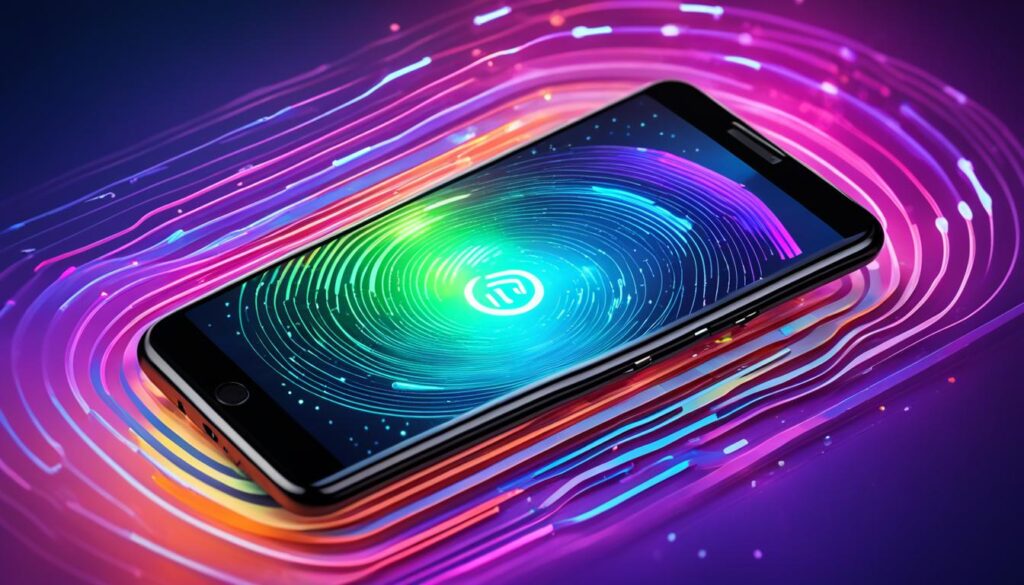
In today’s rapidly advancing mobile technology landscape, reception standards play a crucial role in ensuring a seamless communication experience. Two key standards that have garnered significant attention are LTE and 5G. Understanding these standards and their impact on reception quality is essential for navigating the evolving network landscape and optimizing your cell phone’s performance.
Effect of 5G Adoption on Reception Quality
With the widespread adoption of 5G technology, cell phone reception quality has seen significant improvements. 5G networks offer faster speeds, lower latency, and increased capacity, resulting in enhanced connectivity and signal strength. The adoption of 5G enables phones to leverage more advanced network capabilities, leading to better reception and a more seamless communication experience.
Navigating Between 4G LTE and 5G Networks for Best Performance
While 5G brings promising advancements, it’s important to understand the interplay between 4G LTE and 5G networks. As coverage for 5G continues to expand, it is crucial to navigate between these networks for optimal reception performance. Depending on your location, network availability, and device capabilities, your phone will automatically switch between 4G LTE and 5G to ensure the best possible reception. By ensuring your phone is compatible with both networks and staying informed about network availability in your area, you can take advantage of the benefits of 5G while maintaining a reliable connection.
Enhancing Your Phone’s Reception: Tips and Tricks
When it comes to improving your phone’s reception, there are several tips and tricks that can help enhance signal strength and connectivity. In this section, we will explore some effective methods to optimize your phone’s reception quality. From signal boosting accessories to software updates and DIY solutions, these techniques can make a significant difference in your overall communication experience.
Signal Boosting Accessories and Their Effectiveness
Signal boosting accessories are designed to improve signal reception and enhance the strength of your phone’s connectivity. These accessories, such as signal boosters and external antennas, work by amplifying weak signals and reducing interference. By attaching them to your phone or placing them in strategic locations, you can significantly enhance your phone’s reception in areas with low coverage or weak signals. It’s important to note that the effectiveness of these accessories may vary depending on the specific model and brand, so it’s recommended to choose accessories that are compatible with your phone for optimal results.
Software Updates and Reception improvements
Software updates play a crucial role in improving reception quality on your cell phone. Manufacturers regularly release updates that include bug fixes, performance enhancements, and optimizations for signal reception. By keeping your phone’s software up to date, you can ensure that it is running on the latest firmware, which may include improvements to reception algorithms and network compatibility. Regularly checking for and installing software updates is a simple yet effective way to boost reception performance on your phone.
DIY Solutions to Improve Reception in Low Coverage Areas
In low coverage areas, there are several do-it-yourself (DIY) solutions that can help improve reception on your phone. These solutions include finding optimal positions for your phone, such as near windows or outdoors, to minimize obstructions and enhance signal reception. Additionally, you can try adjusting network settings on your phone, such as selecting the preferred network type or enabling Wi-Fi calling, to improve connectivity. Other DIY solutions involve using household items, such as aluminum foil or a metal can, to create a makeshift signal reflector that can redirect and amplify weak signals. While these solutions may not provide the same level of enhancement as professional equipment, they can help improve reception in challenging environments.
By implementing these tips and tricks, you can enhance the reception quality of your cell phone. Whether it’s through signal boosting accessories, software updates, or DIY solutions, there are various methods to improve signal strength and connectivity. Experimenting with different techniques can help you find the most effective solution for your specific needs, ensuring that you stay connected even in low coverage areas.
Source Links
Top Gaming Phones: Best Cell Phones for Games 2024
The demand for gaming phones has been on the rise, with more and more gamers looking for high-performance mobile devices to enhance their gaming experience. In 2024, there will be several top gaming phones that offer the best specifications, features, and design for serious gamers. These phones are equipped with powerful processors, ample RAM, high refresh rate displays, and advanced cooling systems to handle the demands of graphically-intensive games. Additionally, they offer innovative control features and customization options to enhance gameplay.
But are these gaming phones really worth the hype? Are they truly the ultimate gaming smartphones that they claim to be, or is there more to the gaming experience than just the device itself? Let’s take a closer look at the top gaming phones for 2024 and find out what makes them the best cell phones for games.
Key Takeaways:
- The demand for high-performance gaming phones has been increasing among gamers.
- Top gaming phones in 2024 will offer powerful processors, ample RAM, high refresh rate displays, and advanced cooling systems.
- Innovative control features and customization options contribute to an enhanced gaming experience.
- We will explore the top gaming phones for 2024 and discover what sets them apart as the best cell phones for games.
The Evolution of Gaming Phones
Gaming phones have evolved significantly since their inception, with continuous advancements in technology and design shaping their development. These advancements have revolutionized the gaming industry, offering gamers a whole new level of immersive gaming experiences on the go.
One of the major advancements in gaming phones is the improvement in processing power. Manufacturers have been pushing the boundaries of mobile processing capabilities, equipping gaming phones with powerful processors that can handle graphically-intensive games with ease.
Display technology has also seen remarkable progress in gaming phones. High-resolution, vibrant screens with higher refresh rates have become the norm. These displays offer sharp visuals, smooth motion, and reduced input lag, providing gamers with a visually stunning and responsive gaming experience.
Cooling systems have played a vital role in maximizing the performance of gaming phones. Manufacturers have developed innovative cooling technologies to prevent the devices from overheating during extended gaming sessions. These cooling systems ensure that the gaming phones can maintain peak performance without any thermal throttling.
Moreover, the gaming industry’s growth has led to the development of gaming-specific devices. Dedicated gaming phones are designed with gamers in mind, offering unique features and functionalities tailored to enhance the gaming experience. These devices often come with specialized gaming modes, physical trigger buttons, and software optimizations, allowing gamers to have more control and customization options.
With the continuous evolution of gaming phones, the mobile gaming industry has witnessed tremendous growth. Mobile gaming has become a mainstream form of entertainment, attracting millions of players worldwide. The availability of high-performance gaming phones has contributed significantly to this growth by providing gamers with powerful and immersive gaming devices.
Best Cell Phones for Games: Top Picks for Serious Gamers
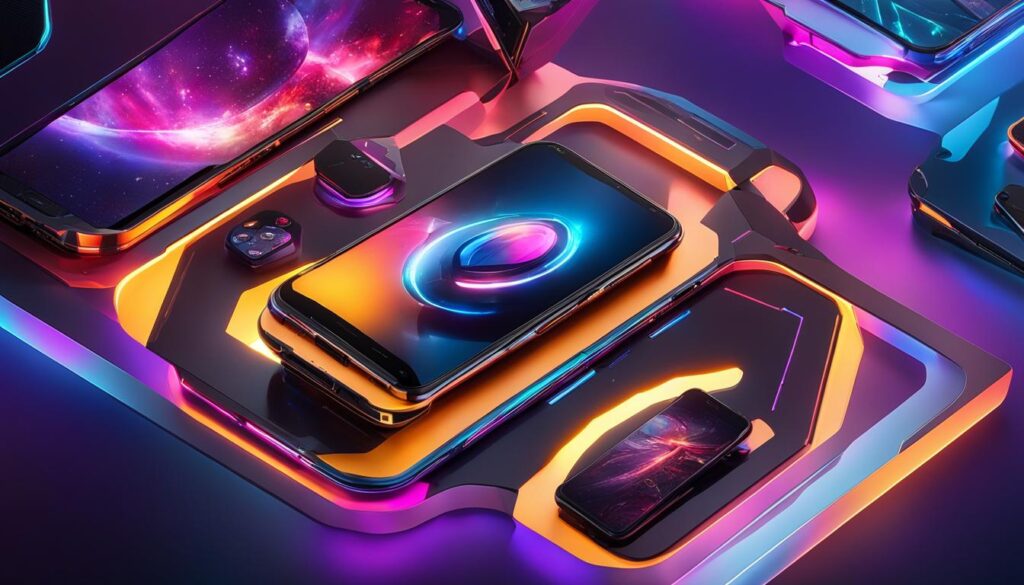
When it comes to gaming phones, serious gamers are always on the lookout for top-rated devices that offer high-performance and innovative gaming features. In this section, we will explore three top picks for gaming phones that have gained popularity among gamers: the Asus ROG Phone 8 Pro, RedMagic 9 Pro, and Black Shark 5 Pro.
Asus ROG Phone 8 Pro: The Powerhouse
The Asus ROG Phone 8 Pro is truly a powerhouse when it comes to gaming. This phone is equipped with the latest Qualcomm Snapdragon 8 Gen 3 processor, ensuring high-speed performance and smooth gameplay. With ample RAM and a high-resolution AMOLED display, the Asus ROG Phone 8 Pro delivers stunning visuals and immersive gaming experiences.
What sets the Asus ROG Phone 8 Pro apart is its range of gaming features and customization options. From touch-sensitive triggers to advanced software optimizations, this gaming phone offers everything a serious gamer needs to enhance their gaming experience. With its superior performance and innovative gaming features, the Asus ROG Phone 8 Pro is a top choice for gaming enthusiasts.
RedMagic 9 Pro: Superior Battery and Cooling System
The RedMagic 9 Pro is another top pick for serious gamers. The Qualcomm Snapdragon 8 Gen 3 chipset powers this gaming phone, ensuring quick and effective performance. It also boasts a high refresh rate display, providing smooth and lag-free gameplay.
One of the standout features of the RedMagic 9 Pro is its superior battery life and advanced cooling system. With a long-lasting battery, gamers can enjoy extended gaming sessions without worrying about running out of power. The advanced cooling system helps to dissipate heat efficiently, keeping the device cool even during intense gaming sessions. With its superior battery life and efficient cooling, the RedMagic 9 Pro is a reliable gaming phone for serious gamers.
Black Shark 5 Pro: Innovative Control Features
The Black Shark 5 Pro offers a unique gaming experience with its innovative control features. This gaming phone features physical pop-up triggers along the top of the device, allowing gamers to have precise control during gameplay. Combined with its powerful hardware and advanced display technology, the Black Shark 5 Pro provides an immersive gaming experience like no other.
With its top-rated gaming performance and innovative control options, the Black Shark 5 Pro is a preferred choice for gamers who value precise and responsive controls in their gaming phones.
These top gaming phones – the Asus ROG Phone 8 Pro, RedMagic 9 Pro, and Black Shark 5 Pro – are trusted and highly recommended options for serious gamers. Their high-performance capabilities, innovative gaming features, and superior gaming experiences make them the top picks for gaming enthusiasts. Whether you prioritize powerful performance, long-lasting battery life, or innovative control options, these gaming phones deliver the best gaming experiences that serious gamers crave.
Understanding Gaming Phone Specifications
When it comes to gaming phones, understanding the specifications is essential to make an informed purchasing decision. Key specifications to consider include the processor, RAM, display, and cooling system. Let’s dive into the details of these gaming phone specifications and their importance for gamers.
1. Processor: The processor is the heart of a gaming phone, determining its overall performance. Look for phones equipped with high-performance processors, such as the Qualcomm Snapdragon series, for seamless gameplay and faster loading times.
2. RAM: RAM plays a crucial role in multitasking and smooth gameplay. Opt for phones with ample RAM, such as 8GB or more, to ensure efficient performance while running resource-intensive games and applications.
3. Display: The display size, resolution, and refresh rate significantly impact the gaming experience. Larger displays offer a more immersive feel, while higher resolutions deliver sharper and more detailed graphics. Additionally, high refresh rate displays, like ones with 90Hz or 120Hz, provide smoother visuals and reduced motion blur.
4. Cooling System: Extended gaming sessions can generate heat, leading to performance throttling and discomfort. Gaming phones with advanced cooling systems, such as heat pipes or liquid cooling, help dissipate heat efficiently, ensuring optimal performance and a comfortable gaming experience.
To better understand these specifications, take a look at the table below:
| Specification | Explanation |
|---|---|
| Processor | The central processing unit is responsible for executing game instructions and handling overall device performance. |
| RAM | Random Access Memory that stores data for active applications, enabling smoother multitasking and faster loading times. |
| Display | The screen size, resolution, and refresh rate that determine the visual quality and smoothness of gameplay. |
| Cooling System | The technology used to dissipate heat generated during gaming sessions, preventing performance issues and discomfort. |
Understanding gaming phone specifications empowers gamers to select a device that meets their gaming needs and delivers an immersive gaming experience. Now that we’ve explored the importance of gaming phone specifications, let’s move on to the next section.
Design and Comfort: More Than Just Specifications
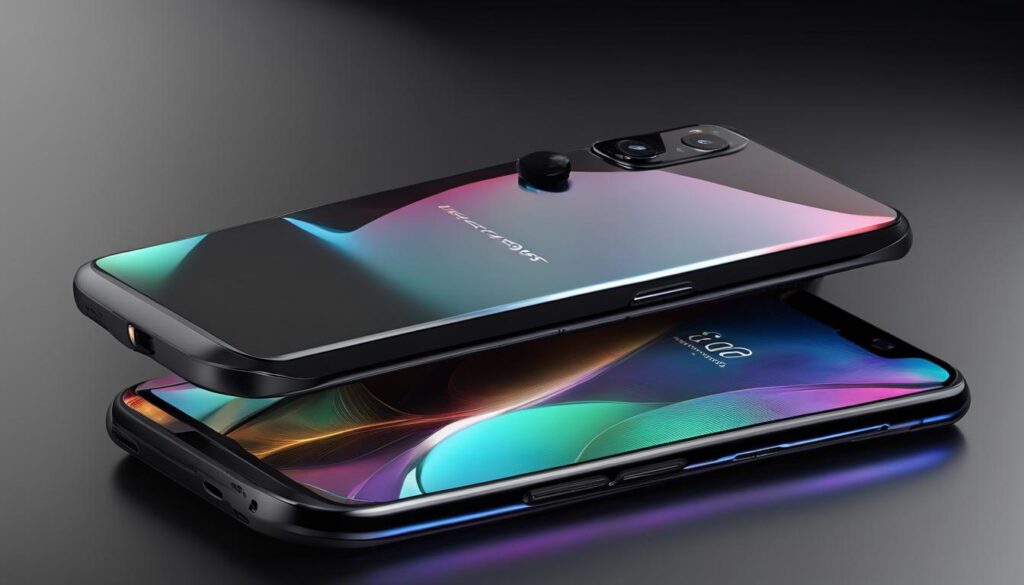
Gaming phones are not just about powerful specifications; they also prioritize design and comfort to enhance the overall gaming experience. The ergonomics and sleekness of gaming smartphones play a crucial role in providing comfort during long gaming sessions. Let’s explore two exceptional gaming phones that excel in design and comfort.
Asus ROG Phone 7 Ultimate: Ergonomic Excellence
One standout gaming phone in terms of design and comfort is the Asus ROG Phone 7 Ultimate. This device is renowned for its ergonomic excellence, featuring a curved back that provides a comfortable grip during gameplay. The curved design allows the phone to fit perfectly in the hand, reducing strain and fatigue during intense gaming sessions.
The Asus ROG Phone 7 Ultimate is not only comfortable to hold, but its design is optimized for gaming. The strategically placed buttons and controls ensure easy access, allowing gamers to swiftly execute their desired actions without hindrance. With this ergonomic gaming phone, players can enjoy extended gaming sessions with utmost comfort and convenience.
Motorola Edge Plus: Sleek Design and Practicality
Another gaming phone that combines style and comfort is the Motorola Edge Plus. It boasts a sleek and premium design, offering a slim and lightweight profile that is a joy to hold. The device’s slim construction ensures a comfortable grip, allowing gamers to immerse themselves in their gameplay without experiencing discomfort or strain.
One of the notable design features of the Motorola Edge Plus is its curved display, which not only adds to the visual appeal but also enhances the overall gaming experience. The curved display provides a more immersive feel, creating a seamless visual flow while gaming on this sleek smartphone. Additionally, the easy access to controls further enhances the overall practicality of this gaming device.
Design and comfort are essential considerations when choosing a gaming phone. The Asus ROG Phone 7 Ultimate and Motorola Edge Plus exemplify the importance placed on ergonomic gaming phones and sleek gaming smartphones. These devices prioritize not only powerful specifications but also the comfort and convenience of gamers, providing an enjoyable gaming experience. By combining impressive design elements with ergonomic features, these gaming phones deliver exceptional comfort and style for long gaming sessions.
Gaming Features and Customization
The best gaming phones offer a range of gaming features and customization options to enhance the gaming experience. These features are designed to provide gamers with a more immersive and personalized gameplay.
One of the key gaming features found on gaming phones is touch-sensitive triggers. These triggers serve as additional buttons that can be mapped to specific in-game actions, allowing gamers to have more control and precision during gameplay.
Gaming phones also come with dedicated gaming modes that optimize the device’s performance for gaming. These modes prioritize system resources, such as CPU and GPU power, to ensure a smooth and lag-free gaming experience.
Software optimizations are another notable gaming feature found on gaming phones. These optimizations include features like Game Boosters, which allocate resources to the game being played, leading to enhanced graphics, faster loading times, and reduced latency.
Furthermore, gaming phones offer customization options that allow gamers to tailor their gaming experience to their preferences and play style. Customization options can include the ability to customize control layouts, adjust display settings, and map on-screen buttons.
With gaming phones, gamers have access to game-specific features that can enhance gameplay. These features may include special modes, integrations with game developers, or exclusive in-game content.
Overall, gaming features and customization options on gaming phones contribute to an immersive gaming experience, giving gamers more control and the ability to optimize their device for optimal performance.
Display Technologies: Navigating Resolution and Refresh Rates

When it comes to gaming phones, two important factors that impact the overall visual experience are resolution and refresh rate. In this section, we will explore the significance of high refresh rate displays and resolution considerations for mobile gamers.
High Refresh Rate Displays and Their Impact on Gaming
High refresh rate displays have revolutionized the gaming experience on mobile devices. These displays refresh the screen at a faster rate than standard displays, usually at 90Hz, 120Hz, or even higher. The higher refresh rate results in smoother and more fluid gameplay, reducing motion blur and input lag.
By providing a higher number of frames per second, high refresh rate displays enhance the overall visual experience, making fast-paced action sequences more enjoyable and responsive. Gamers can react quickly and accurately to in-game events, giving them a competitive edge.
Additionally, high refresh rate displays lend themselves well to genres like racing, first-person shooters, and action-adventure games, where quick reflexes and precise movements are crucial. The fluid motion and reduced lag make gameplay feel more immersive and lifelike.
Overall, high refresh rate displays significantly enhance the gaming experience on mobile devices by delivering smoother gameplay, reducing motion blur, and improving responsiveness.
Resolution Considerations for Mobile Gamers
Resolution plays a vital role in determining the visual quality of games on a gaming phone. Higher resolution displays offer sharper and more detailed graphics, resulting in a more visually immersive experience.
However, it’s essential to consider that higher resolution displays may require more processing power, which can impact overall performance. Games rendered at higher resolutions demand more resources from the device’s hardware, potentially leading to reduced frame rates or less stable gameplay.
When choosing a gaming phone, it’s crucial to strike a balance between resolution and performance. Opting for a device with a resolution that can be comfortably supported by its hardware ensures smooth gameplay and optimal performance.
For casual gamers or those who play less visually demanding games, a lower resolution may still provide an enjoyable gaming experience while conserving battery life and optimizing performance. On the other hand, serious gamers or those who prefer visually stunning titles may prioritize higher resolution displays.
In summary, considering the resolution of a gaming phone is essential for mobile gamers. Finding the right balance between resolution and hardware capabilities ensures an optimal visual experience without sacrificing performance.
Comparing Cameras on Gaming Phones
While gaming phones are primarily focused on delivering top-notch gaming performance, they also come equipped with cameras for everyday use. The camera quality on gaming phones can vary, with some devices offering impressive camera capabilities and others focusing more on gaming-specific features. In this section, we will compare the cameras on different gaming phones and discuss the camera quality and photography capabilities of these devices.
When it comes to gaming phones, the camera quality is an important factor to consider. While gaming phone photography may not be the primary focus for gamers, having a capable camera can enhance the overall user experience. Some gaming phones are equipped with high-resolution sensors, multiple lenses, and advanced image processing algorithms, allowing users to capture stunning photos and videos.
On the other hand, some gaming phones prioritize gaming-specific features over camera capabilities. These devices may have more modest camera setups but excel in providing a superior gaming experience with features like high refresh rate displays, powerful processors, and advanced cooling systems.
It’s important to note that not all gaming phones have the same camera performance. Some brands, such as Asus, Xiaomi, and Samsung, have dedicated efforts to improve the camera capabilities on their gaming devices. These phones offer features like optical image stabilization, night mode, and AI-powered enhancements to capture clear and vibrant photos in various lighting conditions.
However, it’s essential to manage expectations when comparing the camera quality on gaming phones. While they may offer respectable camera performance, they might not match the photography capabilities of flagship smartphones from traditional camera-centric brands like Apple or Google. This is due to the primary emphasis on gaming performance and the hardware limitations of gaming-specific devices.
When deciding on a gaming phone, it’s important to prioritize features based on individual needs. If photography is a significant consideration, opting for a gaming phone that offers a good balance between gaming and camera capabilities might be the best choice. Alternatively, if gaming performance is the top priority, compromising on camera quality to get the best gaming experience might be acceptable.
In the next section, we will delve into the price point and value for money in gaming phones, helping you make an informed decision when investing in a gaming device.
Price Point and Value for Money in Gaming Phones
When it comes to gaming phones, price is an important factor to consider. Gaming phones can range in price, with some devices being more budget-friendly while others fall into the premium range. However, it’s important to remember that a higher price tag doesn’t always guarantee the best gaming experience. It’s essential to assess the value for money and consider the cost vs. performance ratio before making a purchase.
To find the best deals on gaming phones, it’s recommended to compare prices across different retailers and online platforms. Keep an eye out for discounts, promotional offers, and bundle deals that can help you save money. Additionally, reading reviews and user experiences can provide valuable insights into the performance and durability of gaming phones, allowing you to make an informed decision.
Finding the Best Deals on Gaming Phones
When searching for the best deals on gaming phones, it’s worth considering both new and older models. While the latest releases may offer cutting-edge features, previous generations of gaming phones can often provide a similar gaming experience at a lower price. Online marketplaces and reputable second-hand sellers can be great places to find discounted gaming phones that are still in excellent condition.
Cost vs. Performance: Making the Right Investment
When it comes to gaming phones, striking a balance between cost and performance is crucial. High-end gaming phones offer top-of-the-line specifications and advanced features that can elevate your gaming experience. However, if budget is a primary consideration, there are also gaming phones available at a more affordable price point that still deliver solid performance.
Consider your gaming needs and preferences when assessing the cost vs. performance aspect. If you’re an avid gamer who requires the latest hardware and wants to play graphically-intensive games at their best, investing in a premium gaming phone might be worth it. On the other hand, if you play more casual games or have a limited budget, a mid-range gaming phone can offer a satisfactory gaming experience without breaking the bank.
Source Links
Top Picks for Best Camera in a Mobile Phone 2024
Did you know that the average person takes over 100,000 photos with their mobile phone in a lifetime? With the advancement of smartphone camera technology, capturing stunning images has become more accessible than ever before. In this article, we will explore the top picks for the best camera in a mobile phone for the year 2024, providing you with insights into the latest trends and advancements in smartphone photography. Whether you’re a photography enthusiast or simply seeking a phone with superior camera capabilities, read on to discover the top contenders and make an informed decision for your next mobile phone purchase.
Key Takeaways:
- Advancements in smartphone camera technology have made it easier for people to capture high-quality photos using their mobile phones.
- Choosing a mobile phone with a top-tier camera can elevate your photography experience and allow you to capture stunning images.
- The year 2024 brings new trends and advancements in smartphone photography, including AI integration and breakthroughs in low light performance.
- Leading mobile phone brands, such as Samsung, Apple, and Google, continue to push the boundaries of camera technology in their devices.
- Considering your specific photography needs and preferences is crucial when selecting a camera phone that suits you best.
Revolutionizing Smartphone Photography: Trends and Advancements
In this section, we will delve into the latest trends and advancements in smartphone photography that are revolutionizing the way we capture and experience moments. From a focus on quality over specs in camera design to the integration of artificial intelligence (AI) to enhance mobile photography, the future of mobile camera technology holds exciting possibilities.
A Focus on Quality Over Specs in Camera Design
Gone are the days when a high megapixel count or a long list of camera specifications guaranteed exceptional image quality. Smartphone manufacturers are now prioritizing the quality of the camera system rather than just focusing on technical specifications. Delivering breath-taking, accurate pictures that can compete with those from professional cameras is the aim.
The Role of AI in Enhancing Mobile Photography
AI is playing a significant role in shaping the future of mobile photography. With AI-powered algorithms, smartphones can now automatically optimize settings, recognize scenes and subjects, and enhance image quality in real-time. From intelligent portrait mode to intelligent night mode, AI is enabling users to capture breathtaking photos with ease and precision.
Future Technologies Shaping Mobile Camera Experience
The future of mobile camera technology holds tremendous potential. Emerging technologies such as computational photography, multi-camera systems, and advanced image sensors are set to redefine the way we capture and interact with images. These advancements will unlock new levels of creativity, allowing users to push the boundaries of mobile photography.
| Technology | Impact on Mobile Photography |
|---|---|
| Computational Photography | It enables advanced image processing techniques to enhance image quality, including features like Super Resolution, improved HDR, and better noise reduction. |
| Multi-camera Systems | Provides versatility and allows users to capture different perspectives, optical zoom capabilities, and depth information for engaging portrait mode effects. |
| Advanced Image Sensors | Delivers higher resolution, improved low-light performance, and better dynamic range for stunning image capture in various lighting conditions. |
With these future technologies on the horizon, mobile photography is set to achieve new heights, enabling users to capture, create, and share unforgettable moments like never before.
Best camera in a mobile phone: The Leaders of 2024
In the fiercely competitive mobile phone industry, having a top-tier camera has become a key factor for many consumers when choosing a new device. In this section, we will explore the leaders in the best camera in a mobile phone category for the year 2024.
When it comes to capturing stunning photos and videos, several mobile phone brands have made significant advancements in smartphone camera technology. These brands have consistently delivered exceptional camera features that push the boundaries of mobile photography. Let’s take a closer look at some of the contenders:
“With its innovative camera technologies, Samsung continues to be at the forefront of the mobile phone industry.”
Samsung: With its innovative camera technologies, Samsung continues to be at the forefront of the mobile phone industry. The brand’s flagship models, such as the Samsung Galaxy S series and Note series, are equipped with cutting-edge camera sensors, multiple lenses, and advanced image processing capabilities. Samsung’s dedication to enhancing the photography experience has resulted in devices that consistently deliver crisp and detailed shots, even in challenging lighting conditions.
“Apple’s commitment to photographic excellence has made its iPhones a popular choice among photography enthusiasts.”
Apple: Apple’s commitment to photographic excellence has made its iPhones a popular choice among photography enthusiasts. The brand’s latest iPhone models feature advanced camera systems that harness the power of computational photography. With features like Deep Fusion and Night mode, Apple devices excel in low light conditions, capturing impressive details and rich colors. Additionally, the seamless integration of hardware and software in Apple’s devices ensures a user-friendly and intuitive photography experience.
“Google’s Pixel lineup is celebrated for its exceptional camera capabilities, backed by innovative software algorithms.”
Google: Google’s Pixel lineup is celebrated for its exceptional camera capabilities, backed by innovative software algorithms. The brand’s commitment to computational photography has resulted in devices that consistently produce stunning images. The Night Sight feature, for example, allows users to capture well-lit photos in extremely dark settings. Furthermore, Google’s commitment to regular software updates ensures that Pixel users always have access to the latest camera features and enhancements.
While Samsung, Apple, and Google are among the leaders in the best camera in a mobile phone category, other brands such as Huawei, Xiaomi, and OnePlus should not be overlooked. These brands have also made significant strides in smartphone camera technology, offering unique features and capabilities that cater to different photography styles and preferences.
As the year 2024 progresses, it will be interesting to see how these brands continue to innovate and push the boundaries of mobile photography, promising even more exciting camera features in the future.
Breakthroughs in Low Light Performance and Camera Versatility

In recent years, mobile phone cameras have made significant breakthroughs in two crucial areas: low light performance and camera versatility. These advancements have revolutionized the way we capture photos on our smartphones, allowing us to capture stunning images even in challenging lighting conditions.
One of the key breakthroughs in mobile phone photography is the evolution of night mode and low light capabilities. Mobile phone cameras have overcome the limitations of low light photography, enabling users to capture clear, well-exposed photos in dimly lit environments. With improved image processing algorithms, advanced sensors, and the use of AI technology, smartphones can now automatically enhance brightness, reduce noise, and retain details in low light situations. This has made low light performance a significant selling point for many smartphone brands.
Furthermore, mobile phones now offer versatility in lens options, providing users with greater photographic flexibility. Gone are the days when smartphone cameras had fixed focal lengths and limited zoom capabilities. Today, many smartphones offer multiple lenses, including wide-angle, telephoto, and macro lenses, giving users the ability to capture a wide range of subjects with different perspectives. These versatile lens options allow photographers to experiment with composition, depth of field, and creative effects, resulting in more dynamic and visually captivating images.
In conclusion, the breakthroughs in low light performance and camera versatility have transformed mobile phone photography. With the evolution of night mode and low light capabilities, users can capture high-quality photos even in challenging lighting conditions. Additionally, the versatility in lens options offers photographers the flexibility to explore different creative possibilities. As smartphones continue to innovate in these areas, we can expect even more remarkable advancements that push the boundaries of mobile photography.
Top Phone Camera Reviews: The User Perspective
When it comes to capturing moments and preserving memories, the camera performance in mobile devices plays a crucial role. In this section, we will provide a user-centric analysis of camera performance, offering insights into the top phone camera reviews from a user perspective.
User-Centric Analysis of Camera Performance
When users evaluate the camera performance of their mobile devices, they consider various factors to determine their satisfaction. Ease of use, photo quality, and overall experience are key aspects that shape user opinions. By analyzing these factors, we can gain valuable insights into how different phones excel in delivering a superior photography experience.
Experiences with the Highest Resolution Phone Cameras
One aspect that users often take into account when selecting a mobile phone is the camera’s resolution. In this section, we will delve into the experiences users have had with the highest resolution phone cameras available in the market. We will explore how these cameras perform in various lighting conditions and capture stunning details, ensuring that users can make an informed decision when choosing their next device.
Real-World Testimonials on Advanced Camera Features
Real-world testimonials provide genuine insights into the advanced camera features offered by different mobile phone brands. Users’ experiences can shed light on features such as optical zoom, image stabilization, and advanced editing capabilities. By sharing these testimonials, we aim to provide valuable information that helps readers understand how these features enhance their photography and ultimately guide them in selecting the best camera phone for their needs.
Comprehensive Smartphone Camera Comparison: Who Wins?
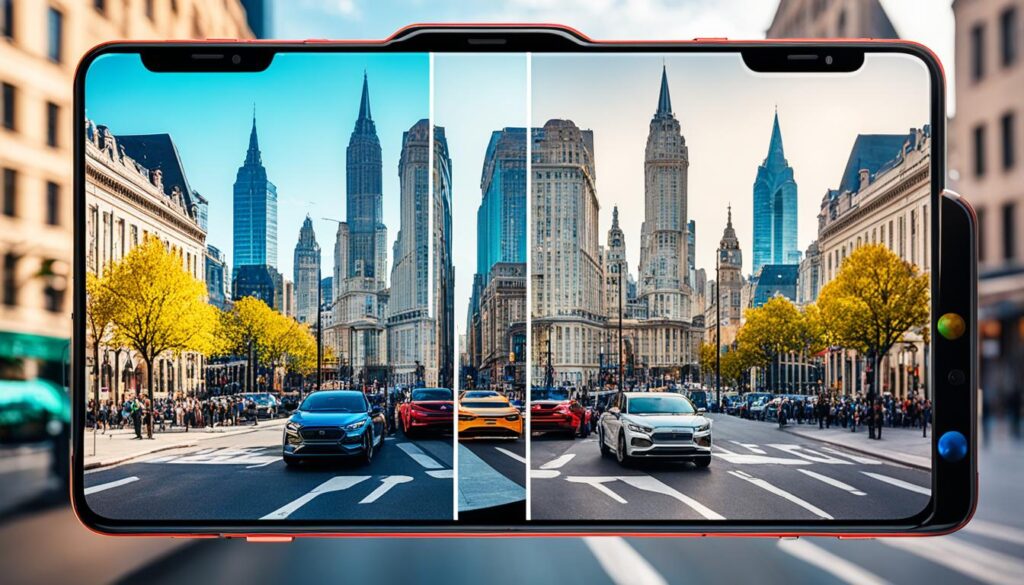
In this section, we will conduct a comprehensive smartphone camera comparison, evaluating different mobile phone brands and models to determine the ultimate winner. Our analysis will focus on camera quality, features, and overall performance, providing readers with the necessary information to make an informed decision when choosing a camera phone.
Whether you prioritize image quality, versatility, or advanced features, our comparison will help you find the best smartphone camera that meets your specific needs. By examining the strengths and weaknesses of each brand and model, we aim to provide a clear understanding of the smartphone camera landscape and assist you in making the best choice for capturing your precious moments.
| Brand | Model | Camera Quality | Features | Overall Performance |
|---|---|---|---|---|
| Samsung | Galaxy S21 Ultra | Excellent | 100x Space Zoom, 8K Video | Outstanding |
| Apple | iPhone 13 Pro Max | Superb | Night Mode, ProRAW | Impressive |
| Pixel 6 Pro | Top-notch | Computational Photography, Astrophotography | Exceptional | |
| OnePlus | 9 Pro | Great | Pro Mode, Hasselblad Partnership | Remarkable |
Table: Smartphone Camera Comparison
Disclaimer: The rankings and ratings provided in the table are based on our analysis and reviewer feedback. It is important to consider your individual preferences and needs when choosing a camera phone.
Unboxing the Best Mobile Phone Camera Features
In this section, we will unbox the best mobile phone camera features, identifying the key features that contribute to superior mobile photography. We will explore how smartphone brands are innovating in camera technology, introducing new features and functionalities to enhance the camera capabilities of their devices. Whether it’s advanced image stabilization, intuitive camera modes, or innovative editing tools, we will highlight the standout features that can elevate your mobile photography experience.
From Enthusiasts to Pro: How to Choose a Camera Phone for Your Needs
Choosing the right camera phone can be a daunting task, especially with so many options available in the market. Whether you’re an enthusiast looking for a high-quality phone camera or a professional photographer seeking advanced camera technology, it’s essential to consider several factors to ensure you make the right choice for your needs.
The first consideration is the image quality you desire. Look for a camera phone that offers high resolution and good low-light performance for sharp and vibrant photos in any lighting condition. Brands like Apple, Samsung, and Google are renowned for their mobile phones with best camera capabilities, providing exceptional image quality that will impress even the most discerning photographers.
In addition to image quality, pay attention to the smartphone photography features that matter to you. Do you require a phone with advanced manual controls for precise adjustments? Or maybe you prefer a device with a variety of camera modes and creative filters to experiment with different styles. Look for brands that offer a wide range of features tailored to your specific photography preferences.
Lastly, consider the advanced camera technology available in different phones. Look for features like optical image stabilization for steady shots, computational photography for enhanced image processing, and multiple lenses for versatile shooting options. Brands like Huawei and Xiaomi are known for pushing the boundaries of camera technology, ensuring you have the latest innovations at your fingertips.
By considering factors like image quality, smartphone photography features, and advanced camera technology, you can make an informed decision when choosing a camera phone. Whether you’re looking to capture stunning landscapes or professional-grade portraits, there’s a high-quality phone camera out there that’s perfect for you. Remember to research different brands and models, read user reviews, and compare specifications to find the mobile phone with the best camera that suits your unique needs.




